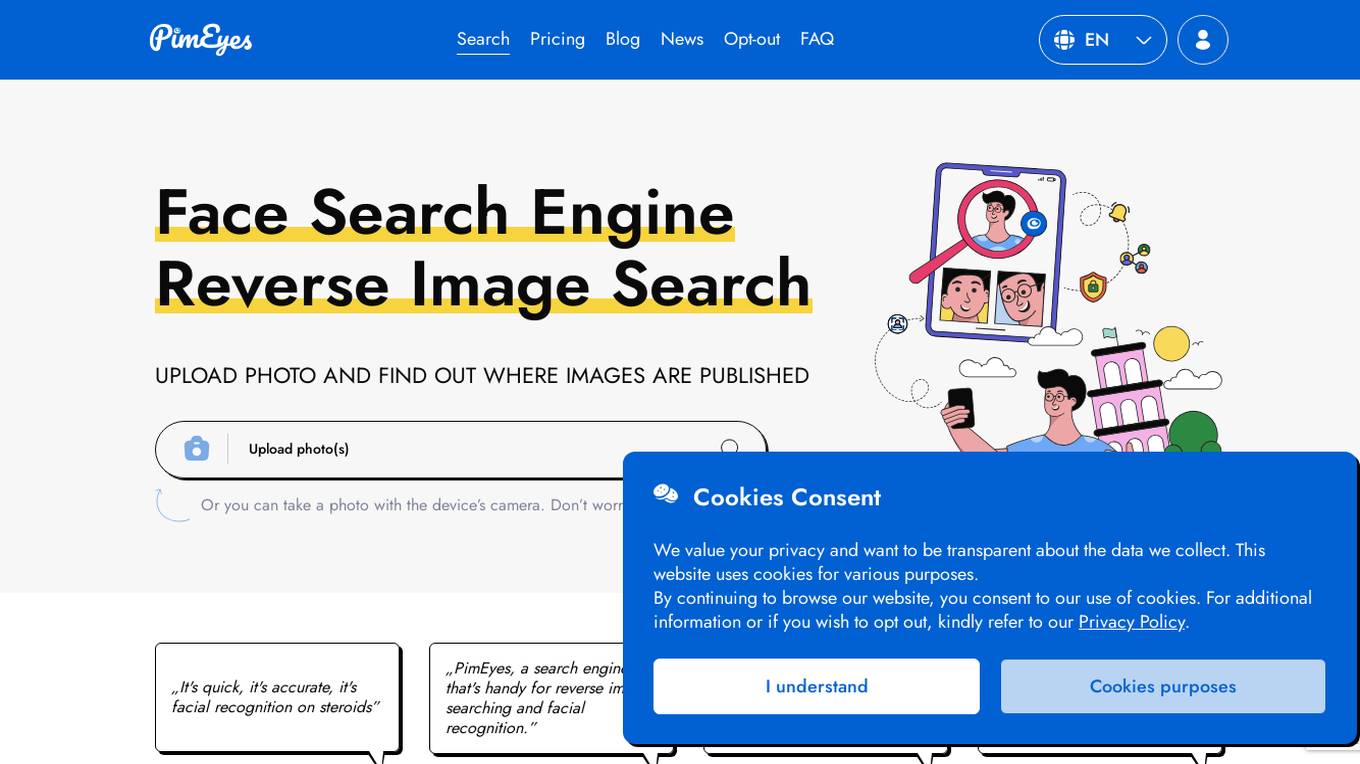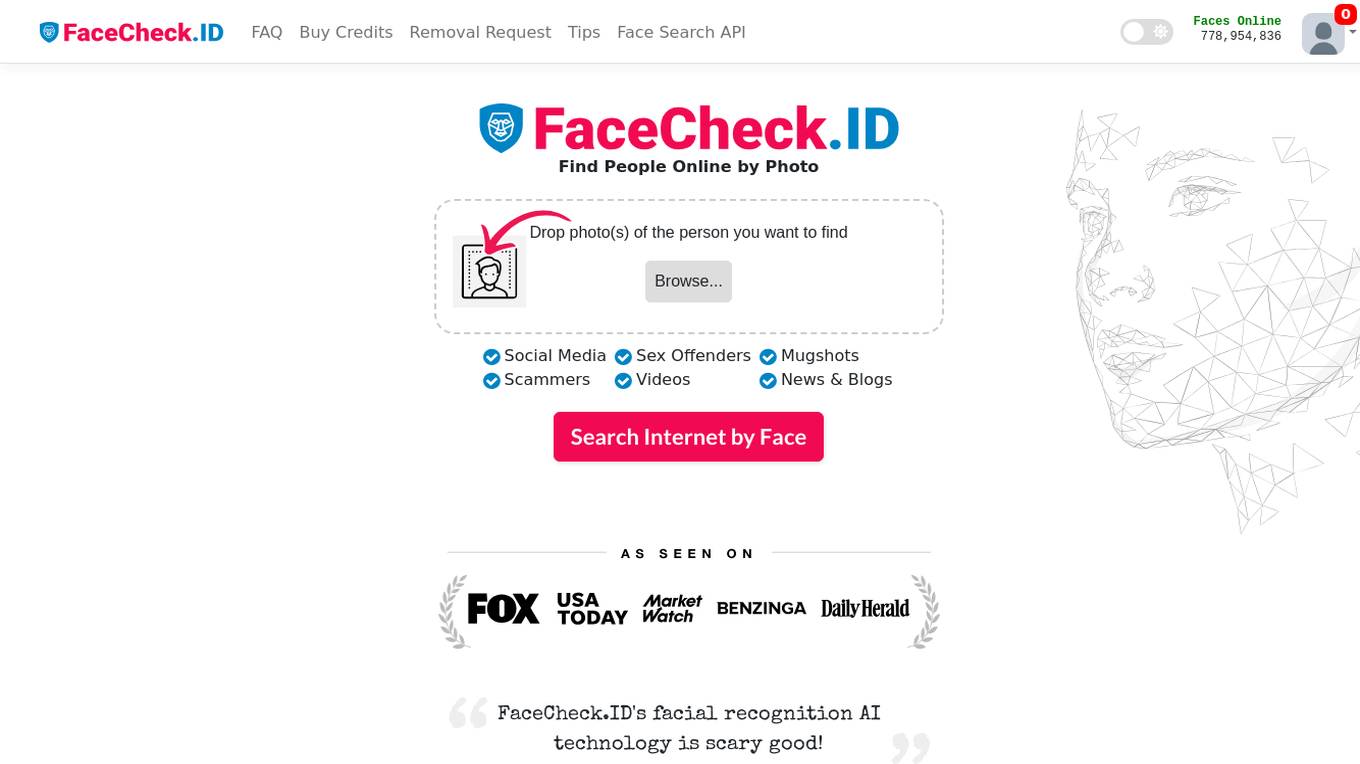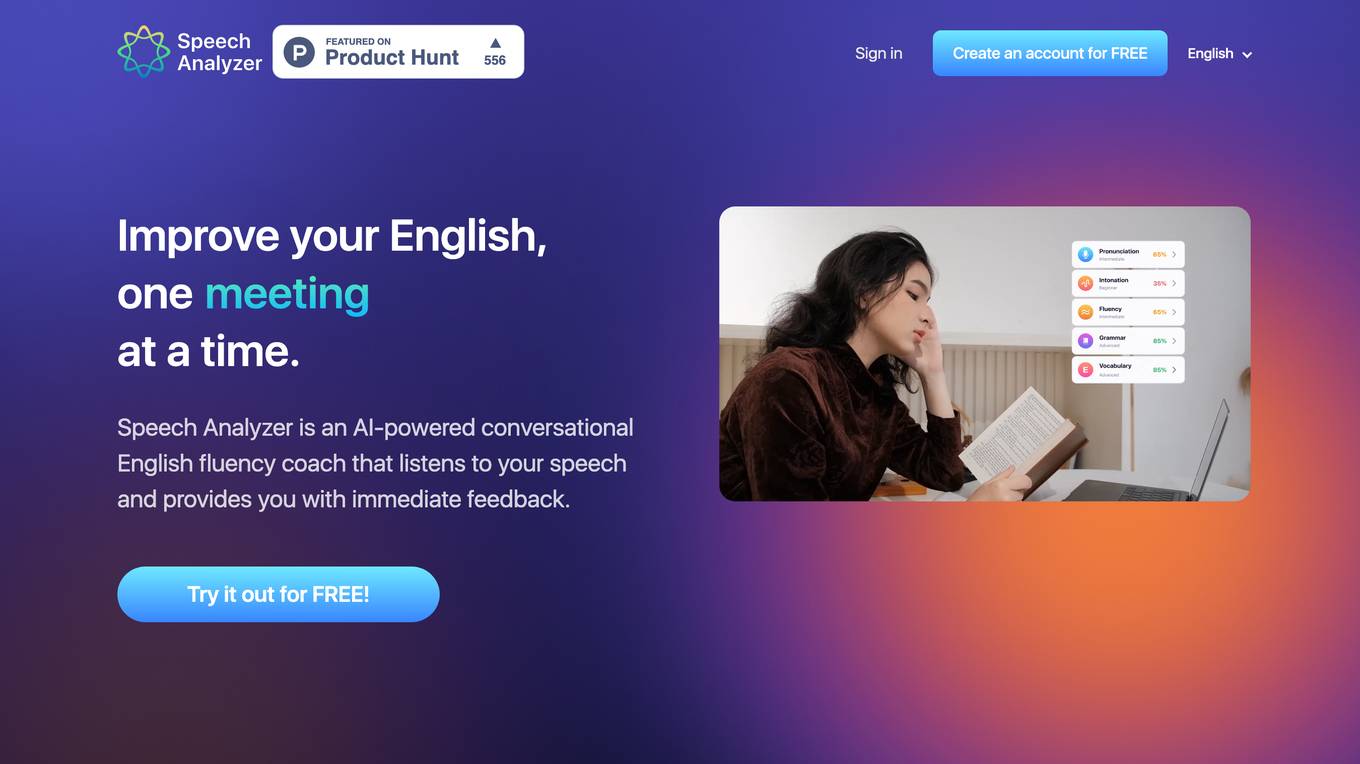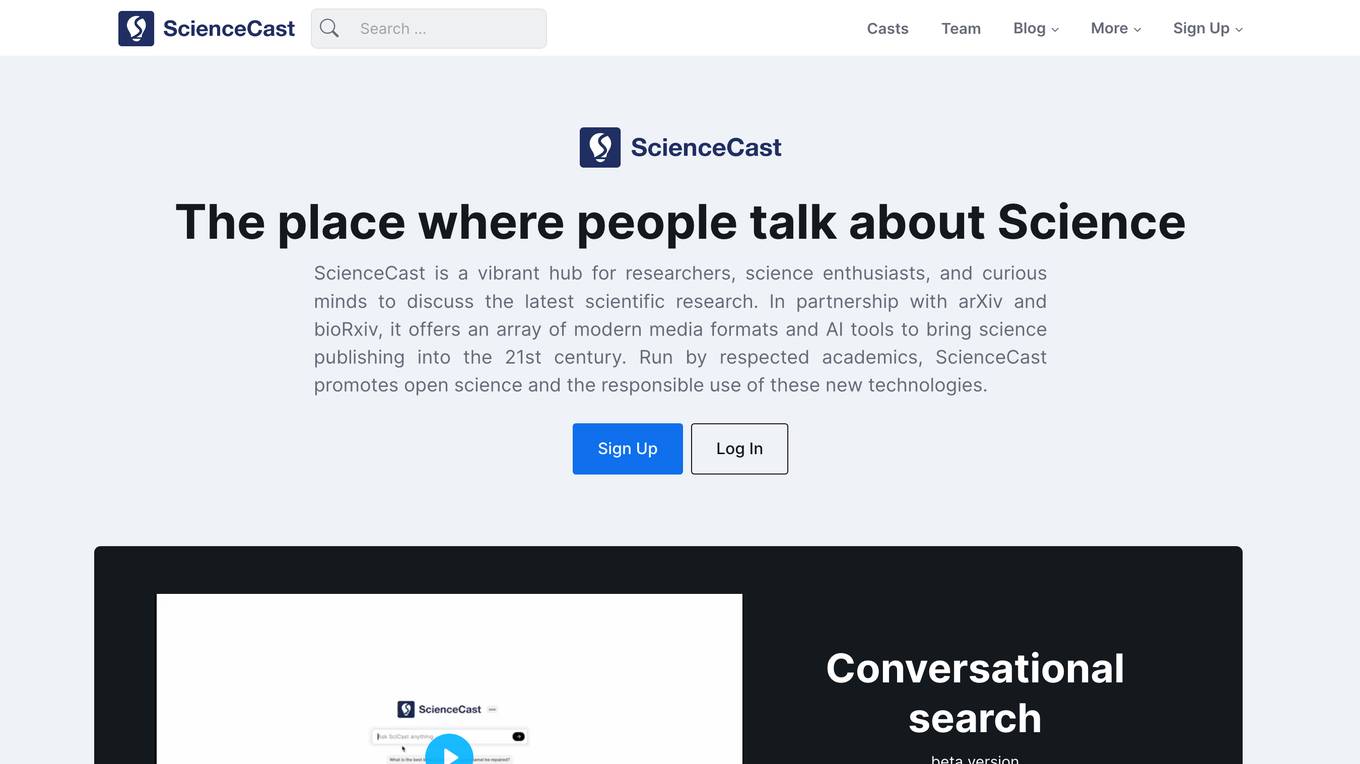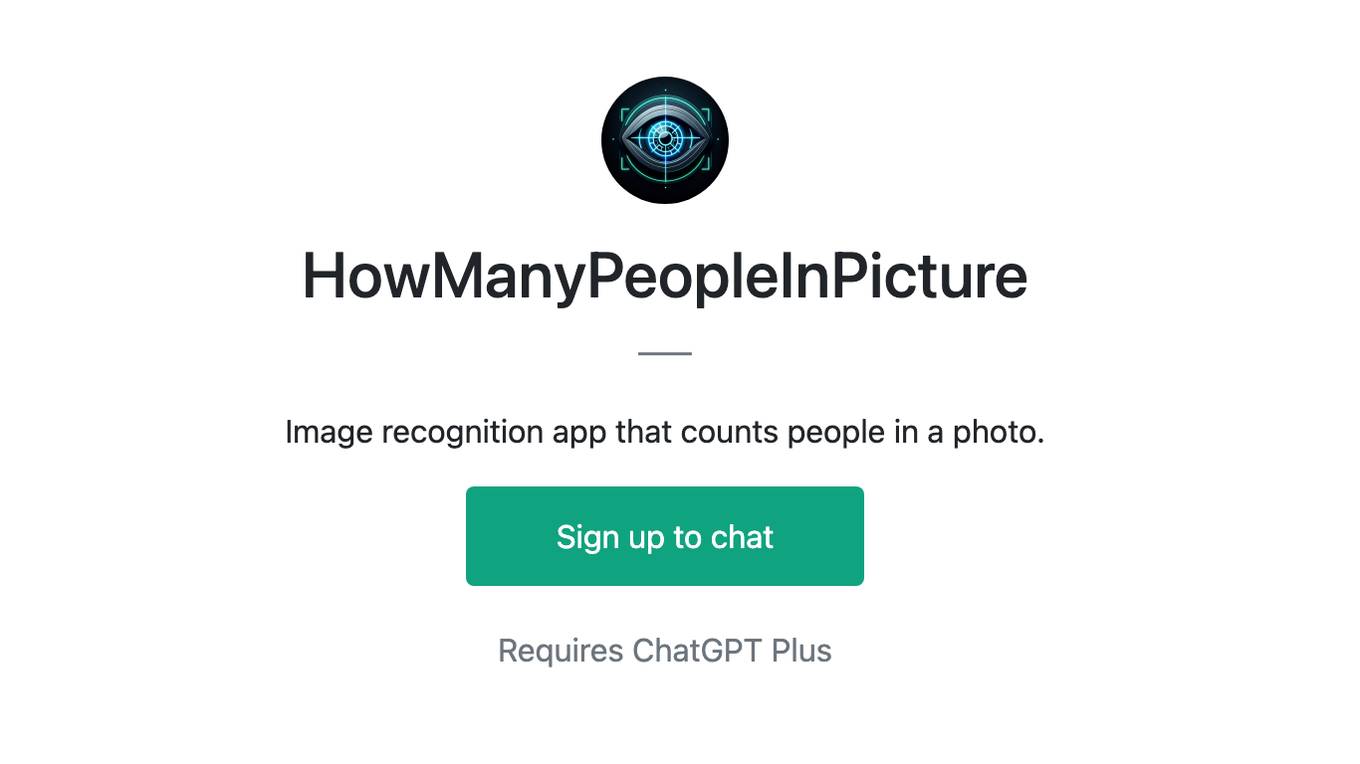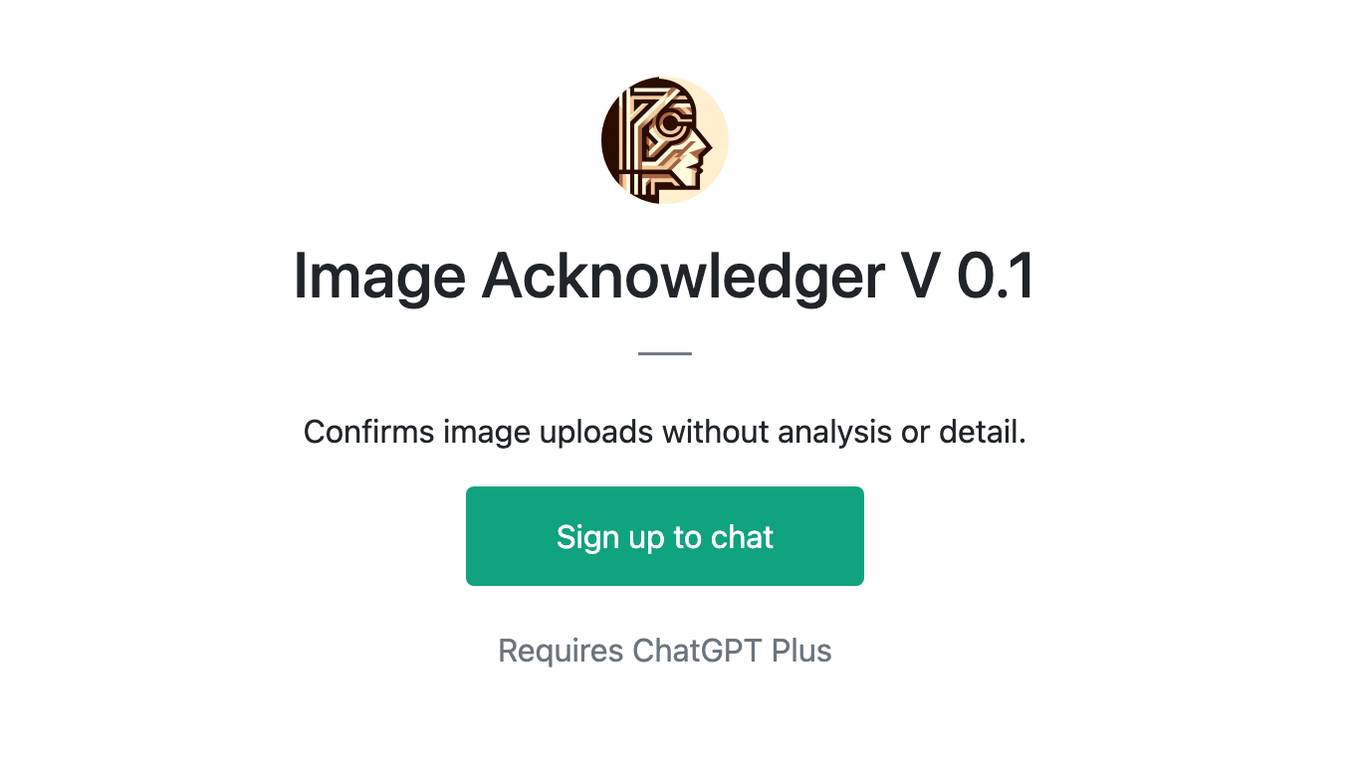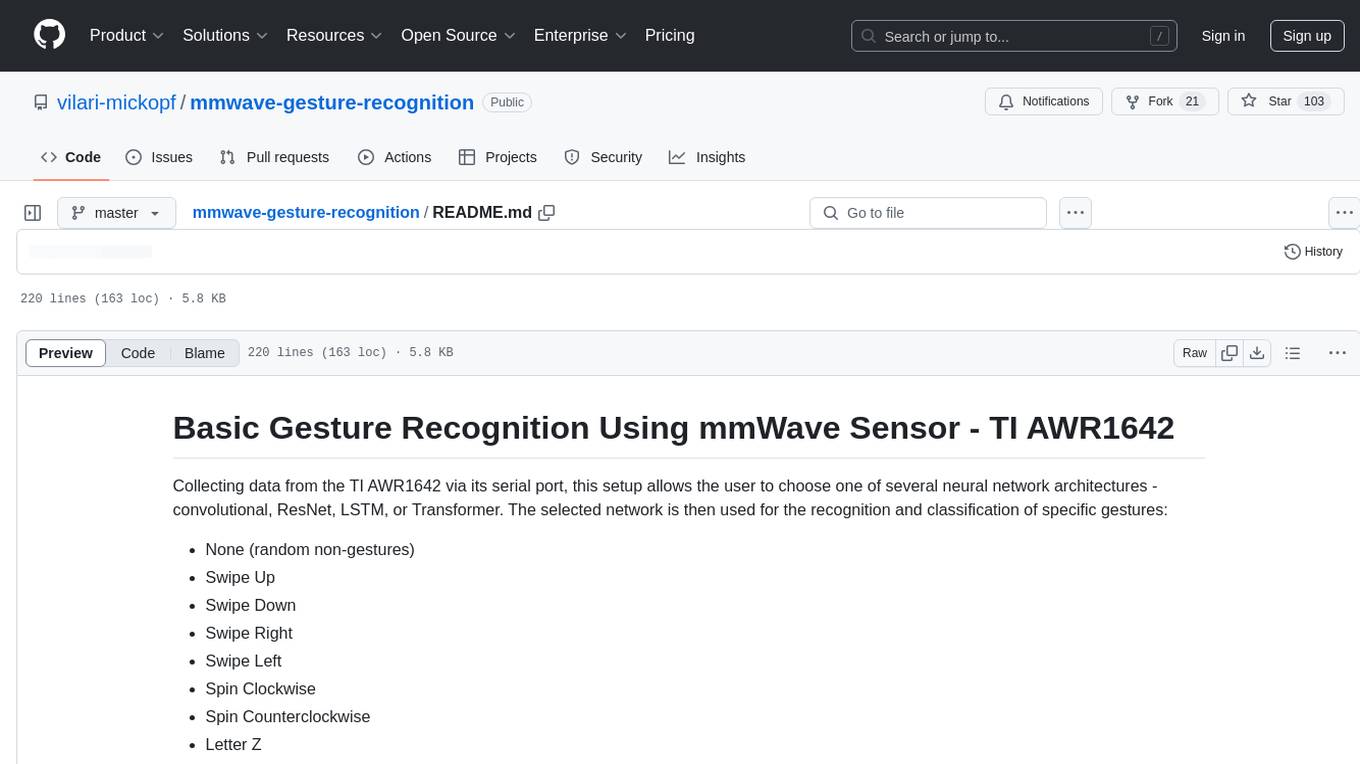AI tools for recognito
Related Tools:
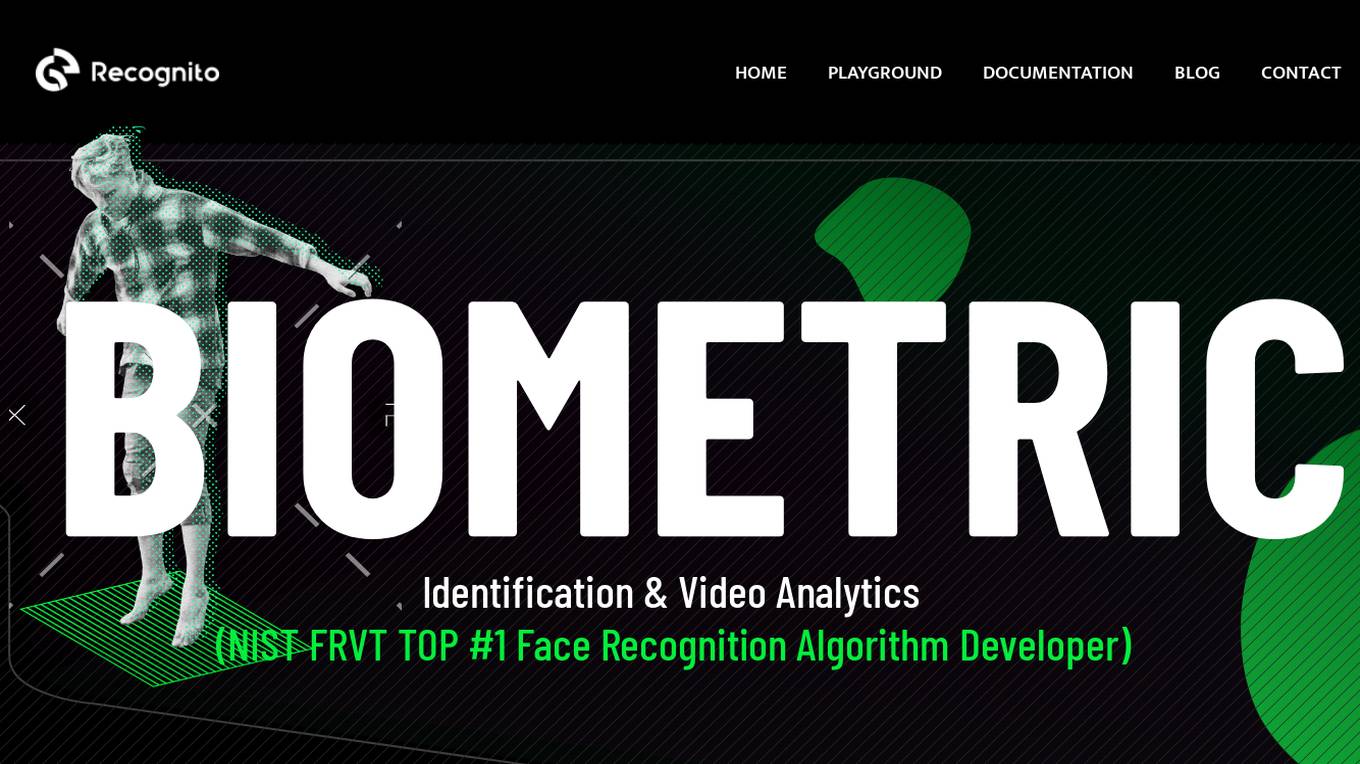
Recognito
Recognito is a leading facial recognition technology provider, offering the NIST FRVT Top 1 Face Recognition Algorithm. Their high-performance biometric technology is used by police forces and security services to enhance public safety, manage individual movements, and improve audience analytics for businesses. Recognito's software goes beyond object detection to provide detailed user role descriptions and develop user flows. The application enables rapid face and body attribute recognition, video analytics, and artificial intelligence analysis. With a focus on security, living, and business improvements, Recognito helps create safer and more prosperous cities.
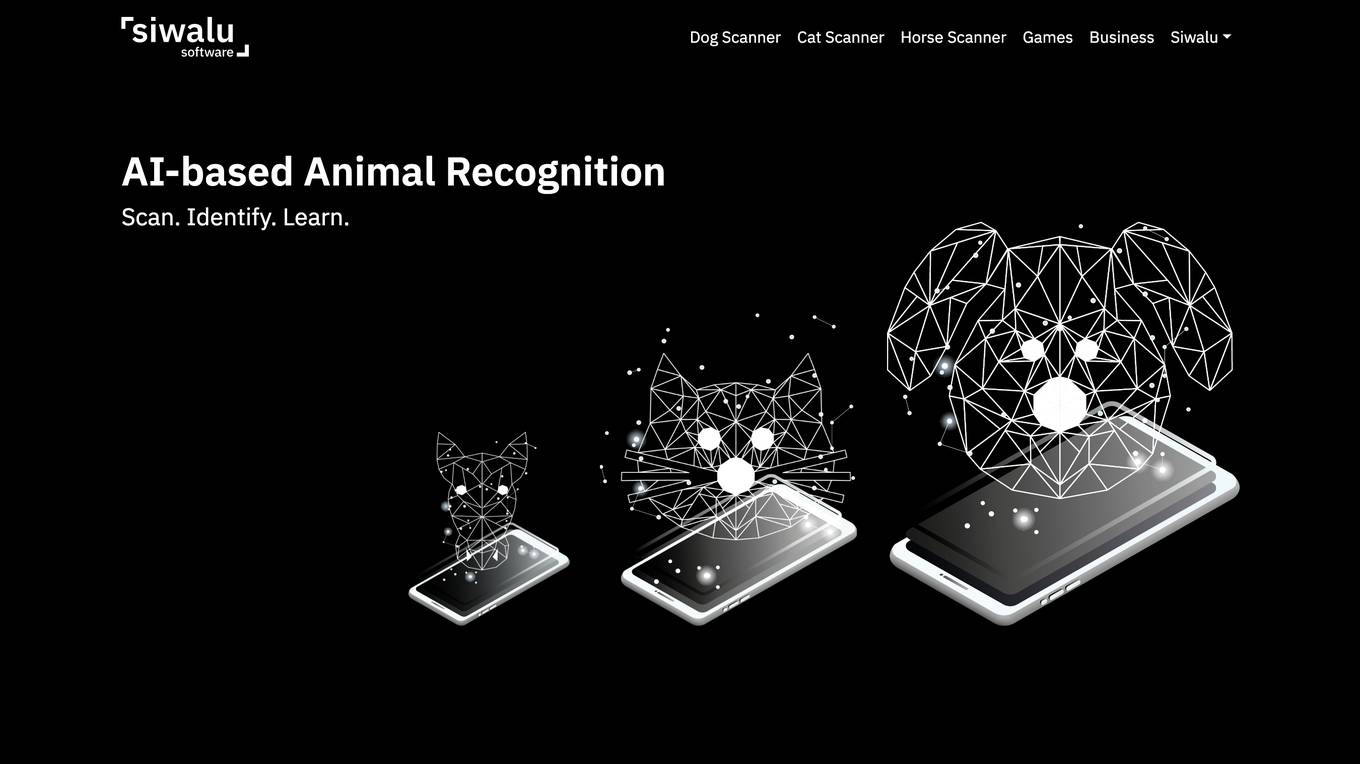
Siwalu
Siwalu is an AI-based image recognition application that specializes in identifying animals. The app helps pet owners learn more about their pets by providing specific information about their breed and characteristics. It offers a quick and reliable way to determine the breed of dogs, cats, and horses, including mixed breeds, without the need for costly DNA analysis. Siwalu aims to increase knowledge about global biodiversity by developing a universal animal recognition system.
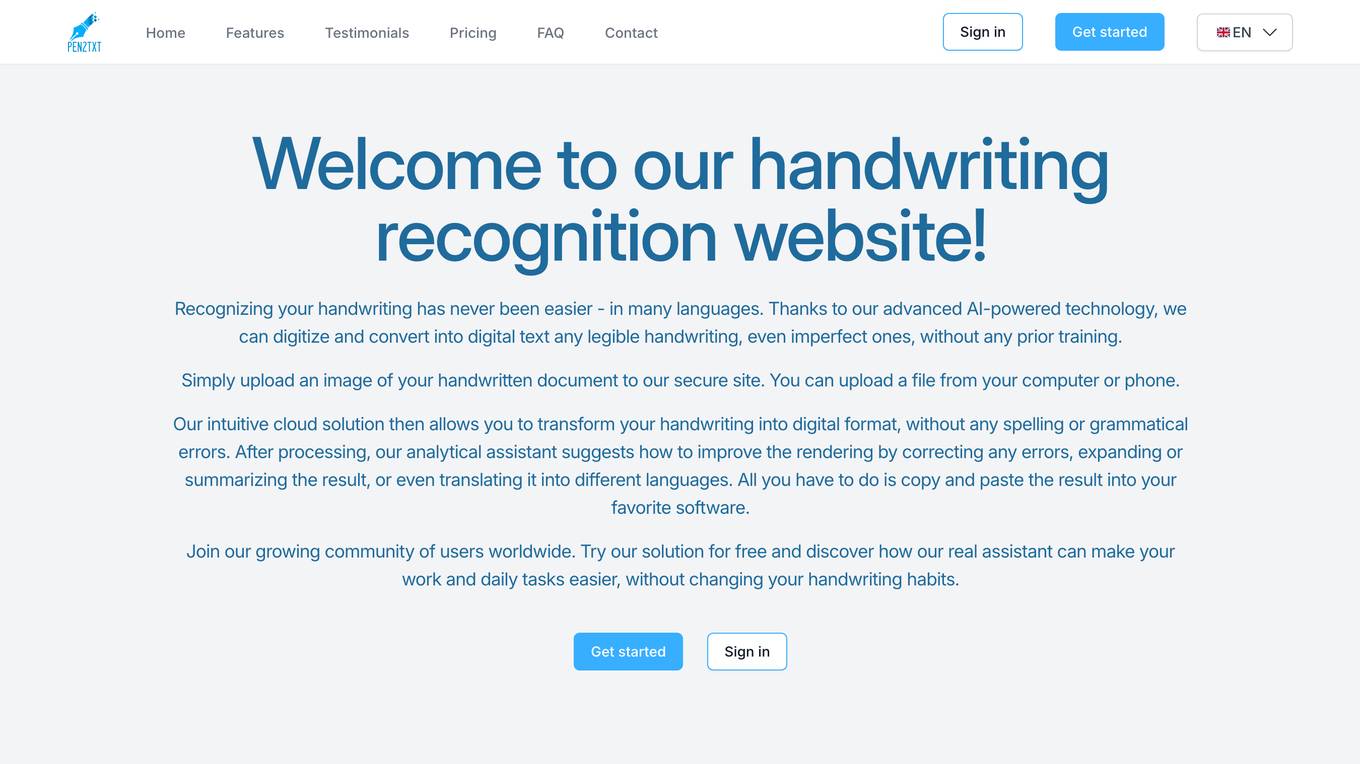
Pen2txt
Pen2txt is an AI-powered tool that converts handwritten notes and sketches into digital text and images. It uses advanced image recognition and natural language processing to accurately transcribe handwriting, making it easy to digitize and share your notes. Pen2txt is designed to be user-friendly and accessible, with a simple interface and a variety of features to help you get the most out of your notes.

Imagga
Imagga is a leading provider of image recognition solutions for developers and businesses. Its API empowers intelligent apps with customizable machine learning technology. Imagga's solutions include tagging, categorization, cropping, color extraction, visual search, facial recognition, custom training, and content moderation. These solutions are used by over 30K startups, developers, and students, and trusted by over 200 business customers in more than 82 countries worldwide.

Trullion
Trullion is an AI-powered accounting software solution that helps businesses streamline their accounting processes, improve accuracy, and reduce risk. It offers a range of features for both accounting teams and auditors, including revenue recognition, lease accounting, and audit workflow automation. Trullion's platform leverages AI to automate and error-proof key accounting functions, from managing financial data to reporting to stakeholders.
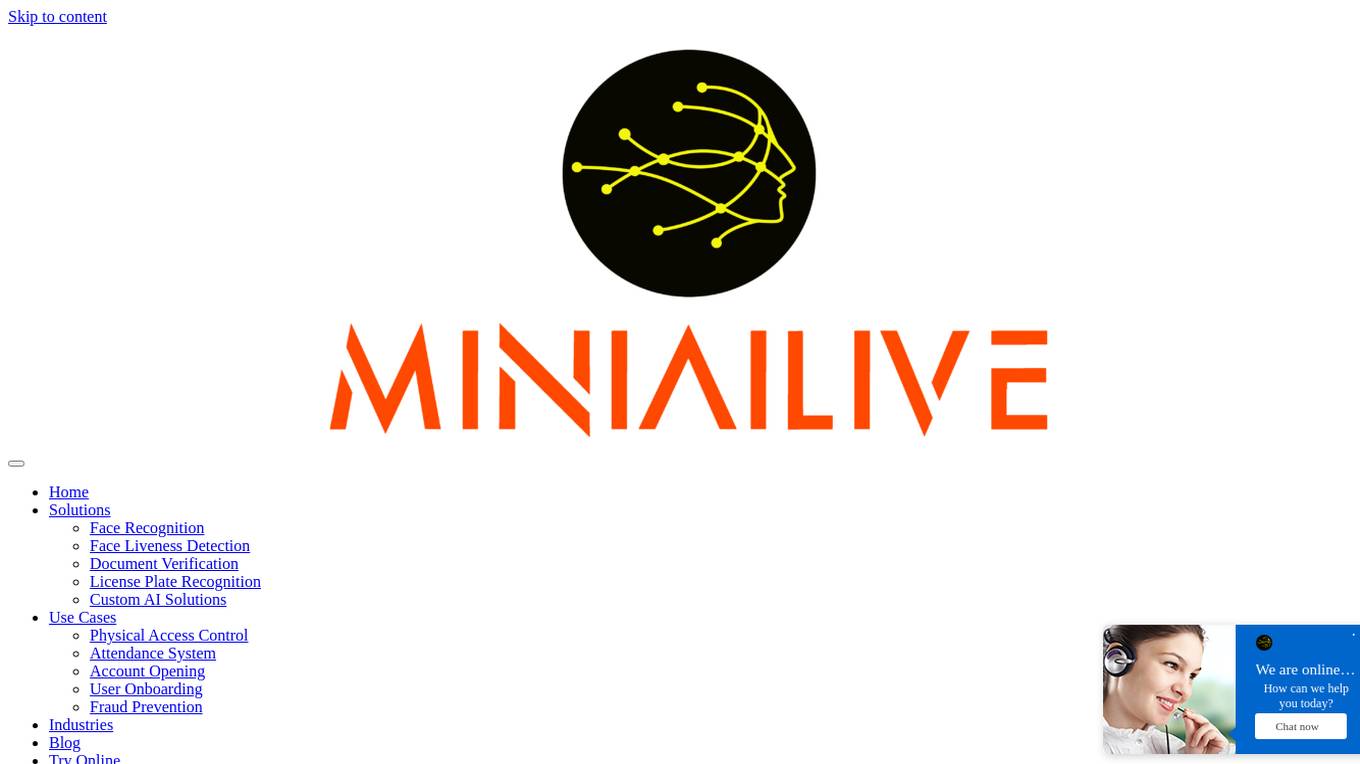
MiniAiLive
MiniAiLive is a provider of Touchless Biometrics Authentication and ID verification solutions. They offer strong security solutions with cutting-edge technologies for facial recognition, liveness detection, and ID document recognition. MiniAiLive ensures seamless integration with clients' existing systems. The application caters to various industries and provides solutions for identity verification, biometric authentication, and fraud prevention. MiniAiLive stands out for its global coverage, configurability, speed, and accuracy in identity verification services.
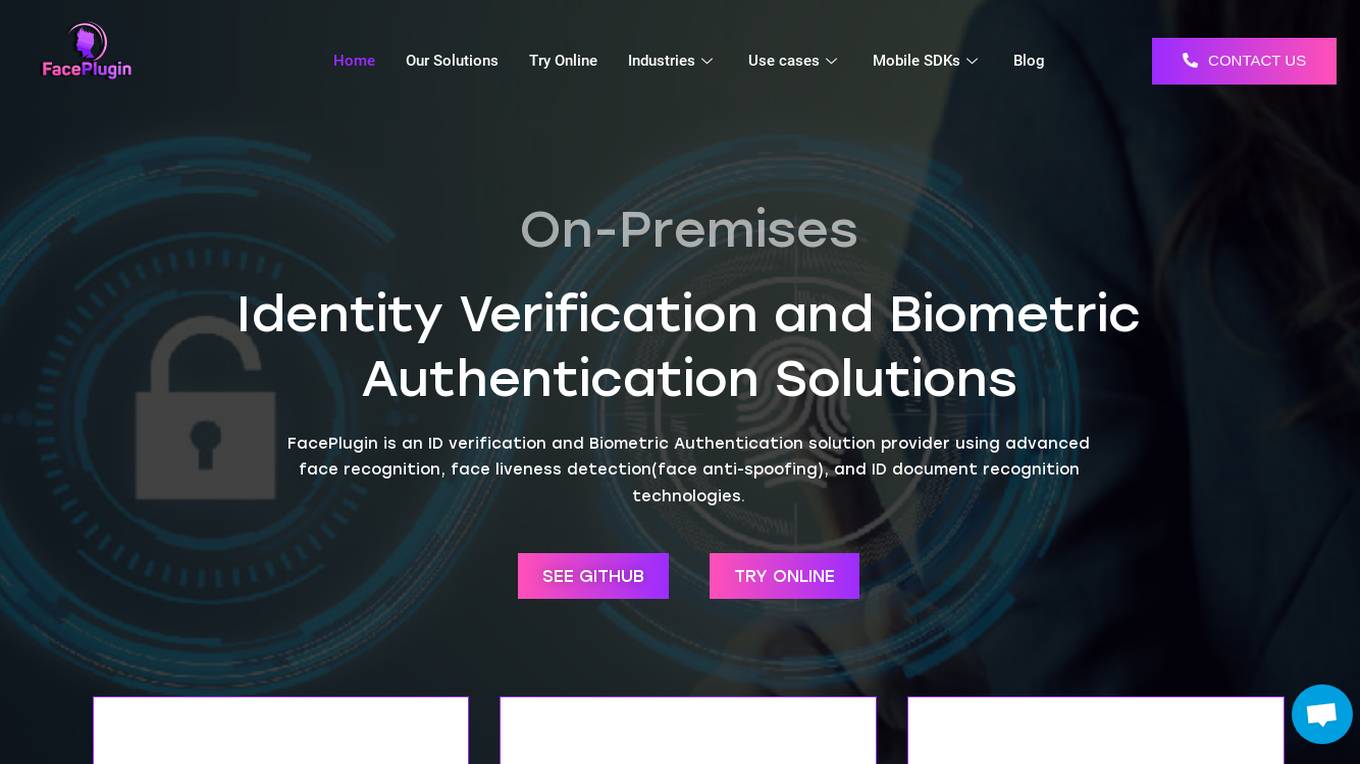
FacePlugin
FacePlugin is an ID verification and Biometric Authentication solution provider that utilizes advanced face recognition, face liveness detection, and ID document recognition technologies. The platform offers solutions for eKYC and ID verification needs, with features such as instant face recognition, enhanced face anti-spoofing technology, and robust identity document verification. FacePlugin aims to secure and streamline the authentication process for various industries and use cases, providing proprietary solutions, top-notch quality, and competitive pricing.
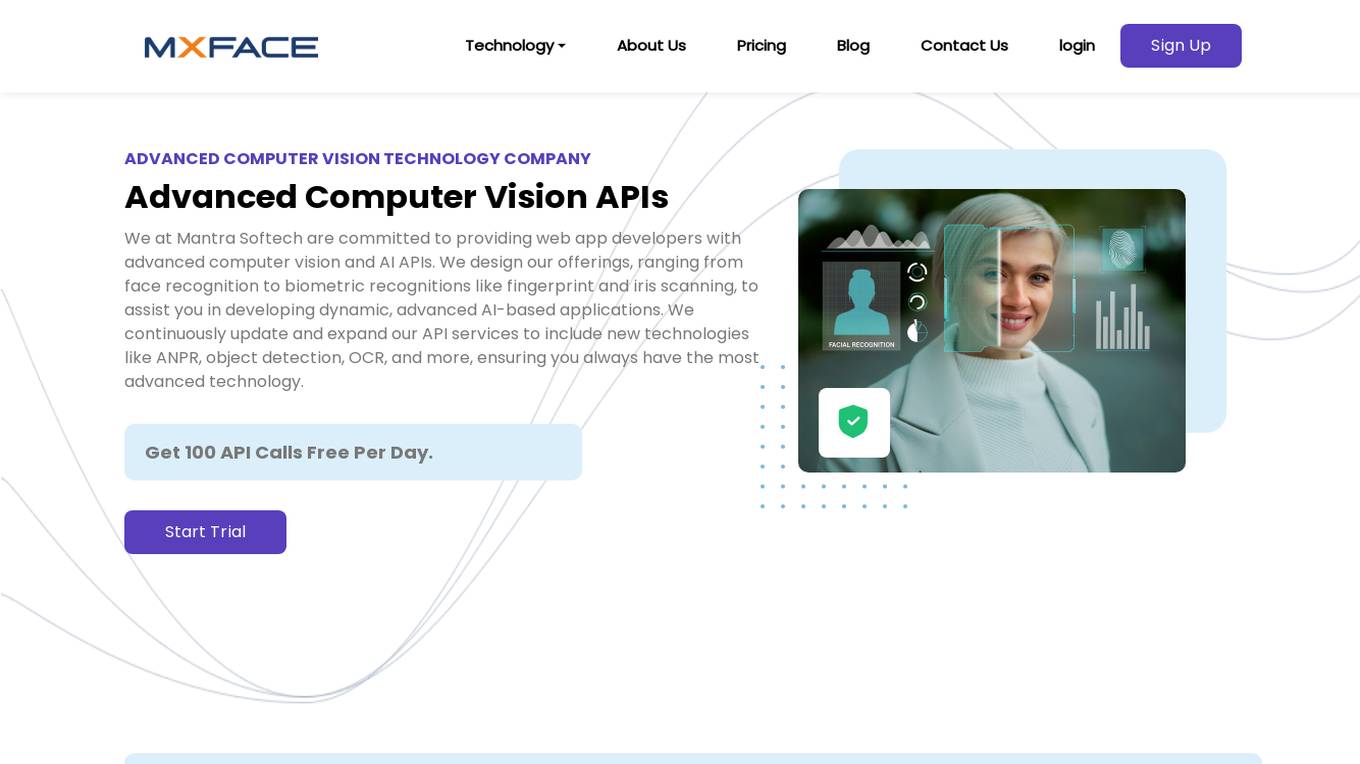
Mxface
Mxface is a leading face recognition API technology that offers advanced computer vision and AI APIs for developers. The platform provides services like face detection, face comparing, face landmarks, face attributes, face search, iris recognition, fingerprint recognition, and people detection. Mxface ensures data security, real-time face recognition, precision, easy face enrollment, and device integration. It is a cloud-based facial recognition solution that supports various use cases and offers comprehensive security features.

Rank One Computing
Rank One Computing (ROC) is an American-made provider of multimodal biometrics and computer vision solutions, specializing in face recognition, fingerprint recognition, and artificial intelligence technologies. Trusted by the U.S. military, law enforcement, and leading FinTech brands, ROC offers top-ranked software for identity proofing and threat detection. Their suite of products includes ROC SDK, ROC Watch, and custom enterprise AI development services. With a focus on security and efficiency, ROC aims to make the world safer and more convenient through unbiased and privacy-conscious applications.

Luxi
Luxi is an AI-powered tool that enables users to automatically discover items in images. By leveraging advanced image recognition technology, Luxi can accurately identify objects within images, making it easier for users to search, categorize, and analyze visual content. With Luxi, users can streamline their image processing workflows, saving time and effort in identifying and tagging objects within large image datasets.
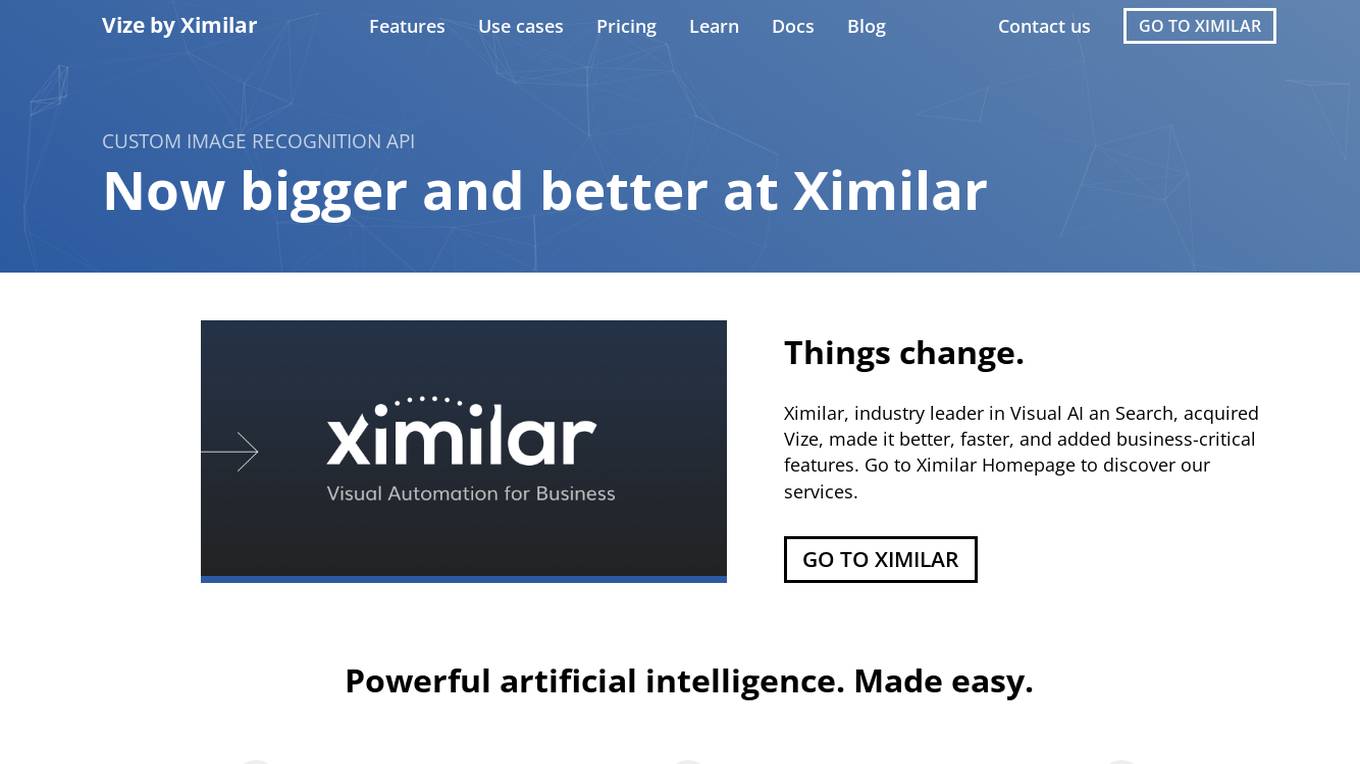
Vize.ai
Vize.ai is a custom image recognition API provided by Ximilar, a leading company in Visual AI and Search. The tool offers powerful artificial intelligence capabilities with high accuracy using deep learning algorithms. It allows users to easily set up and implement cutting-edge vision automation without any development costs. Vize.ai enables users to train custom neural networks to recognize specific images and provides a scalable solution with continuous improvements in machine learning algorithms. The tool features an intuitive interface that requires no machine learning or coding knowledge, making it accessible for a wide range of users across industries.
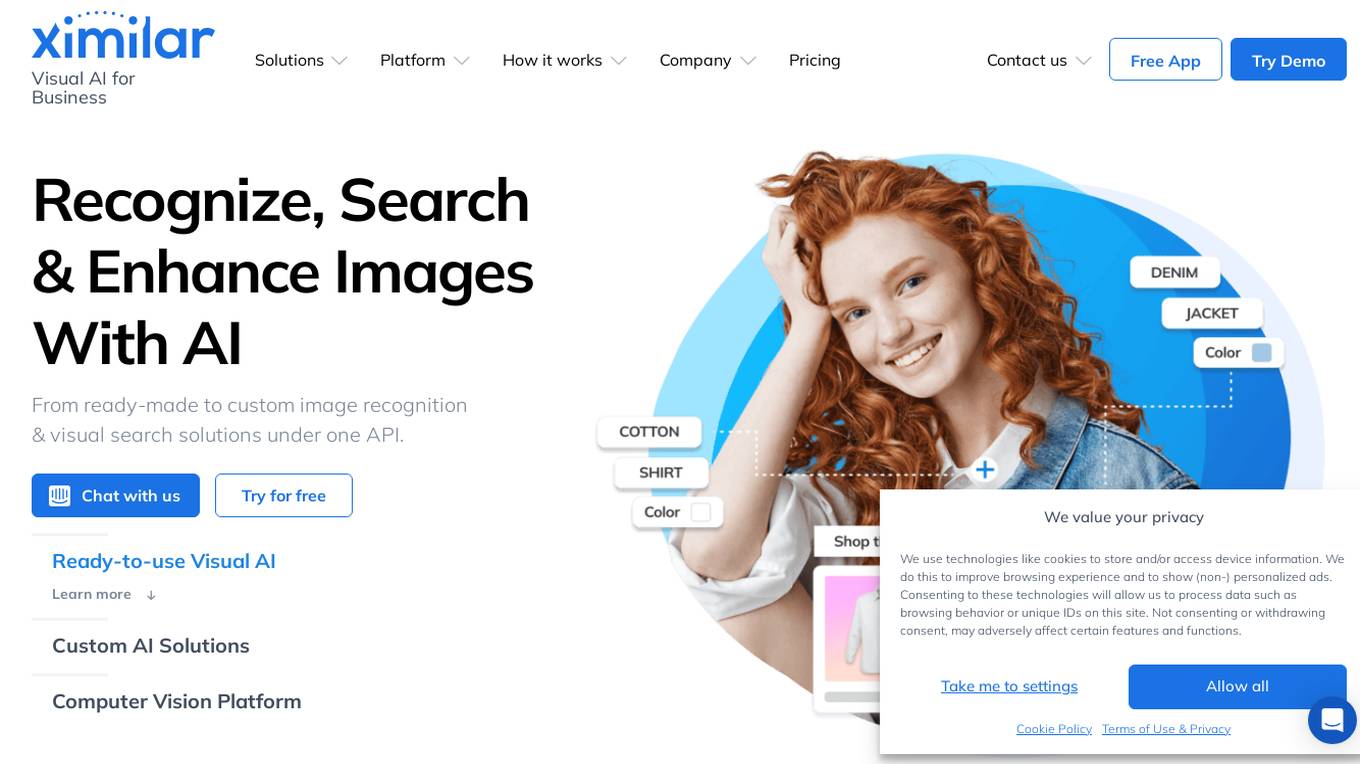
Ximilar Visual AI for Business
Ximilar Visual AI for Business is an AI tool that offers a comprehensive platform for image recognition and visual search solutions. It provides features such as image classification, regression, object detection, AI model combination, image annotation, and more. Users can easily build custom machine learning models without coding, access ready-to-use visual AI demos, and benefit from features like image upscaling, background removal, and color extraction. The platform caters to various industries including fashion, home decor, stock photos, collectibles, med & biotech, manufacturing, and real estate.
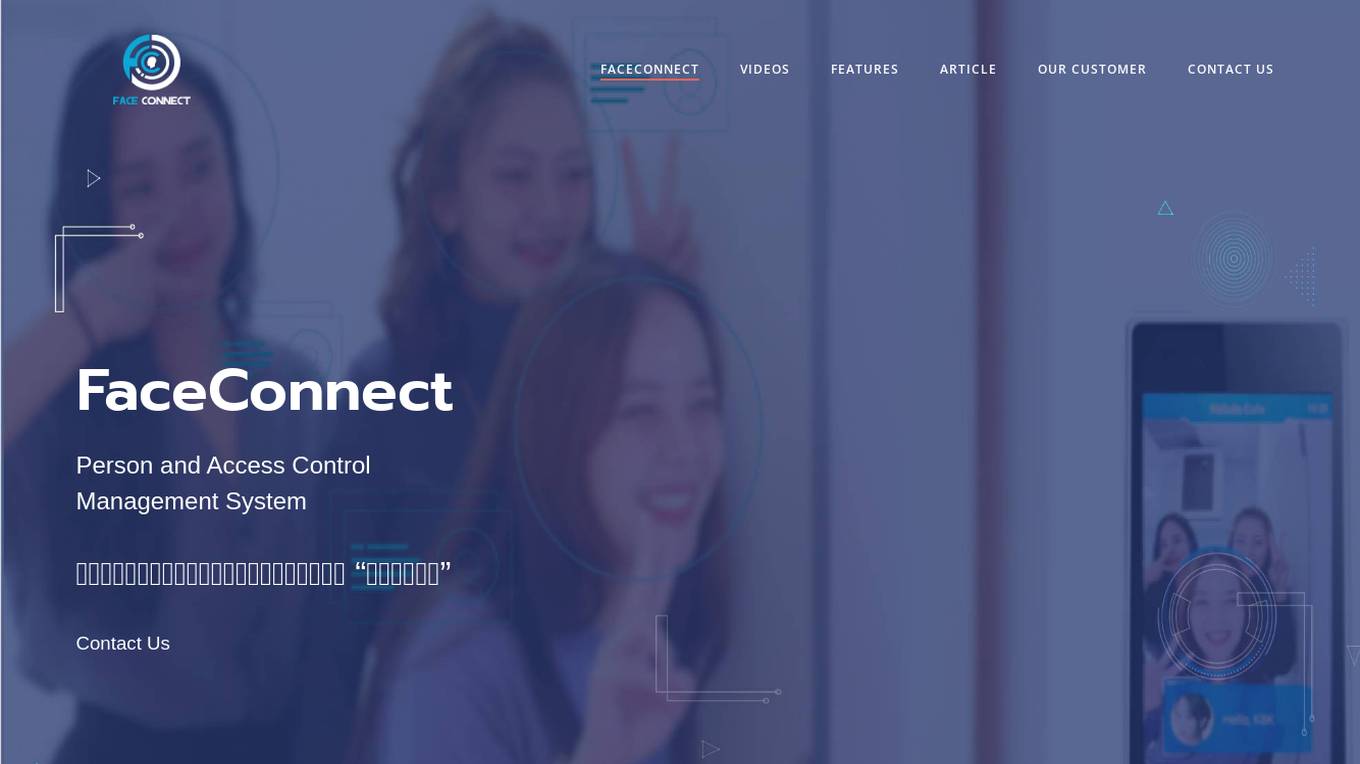
FaceConnect
FaceConnect is a Face Recognition Person and Access Control Management System developed by Innovation Plus Co., Ltd. It offers a centralized system for managing personnel data and controlling access using facial recognition technology. The system enhances workplace security and convenience by eliminating the need for physical ID cards. FaceConnect is designed to streamline time and attendance management in organizations through AI technology, providing efficient and secure access control solutions. The application is popular for its advanced features and high efficiency in face recognition technology.
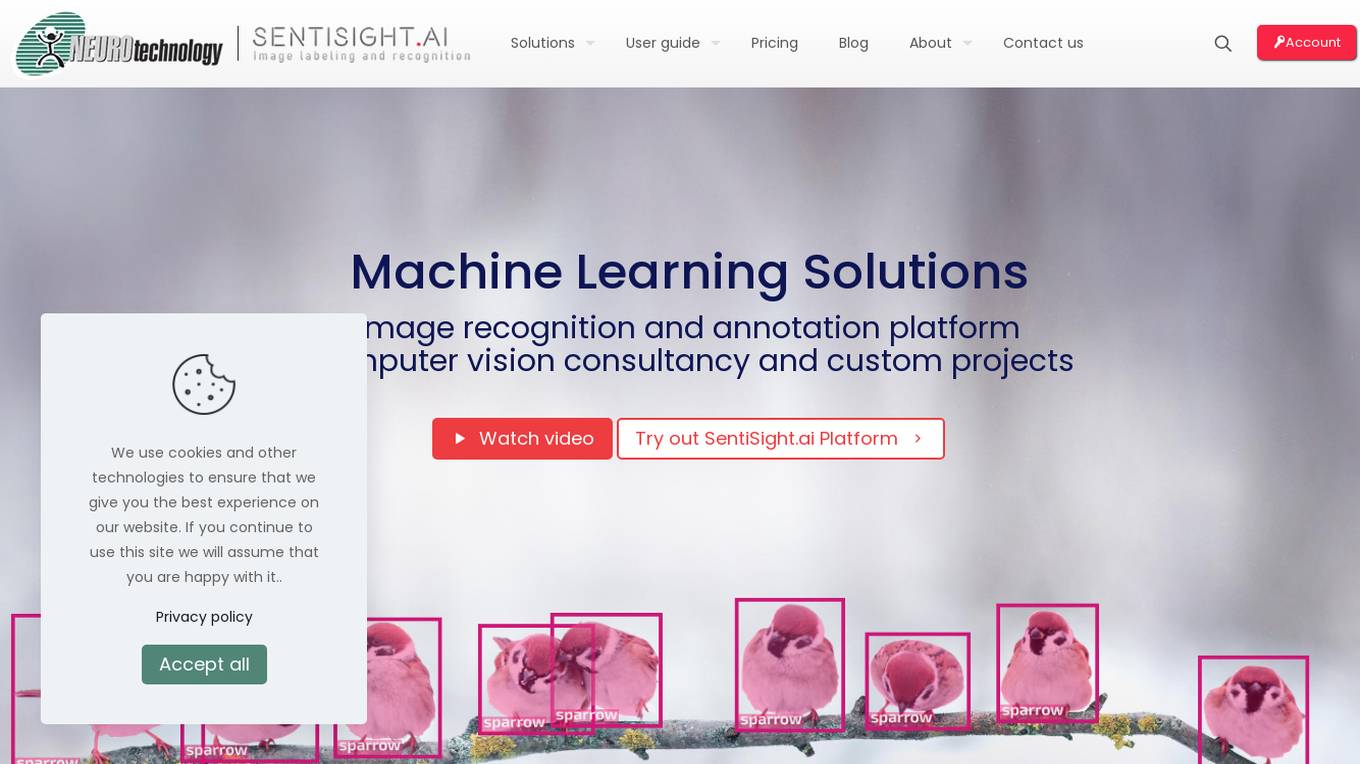
SentiSight.ai
SentiSight.ai is a machine learning platform for image recognition solutions, offering services such as object detection, image segmentation, image classification, image similarity search, image annotation, computer vision consulting, and intelligent automation consulting. Users can access pre-trained models, background removal, NSFW detection, text recognition, and image recognition API. The platform provides tools for image labeling, project management, and training tutorials for various image recognition models. SentiSight.ai aims to streamline the image annotation process, empower users to build and train their own models, and deploy them for online or offline use.
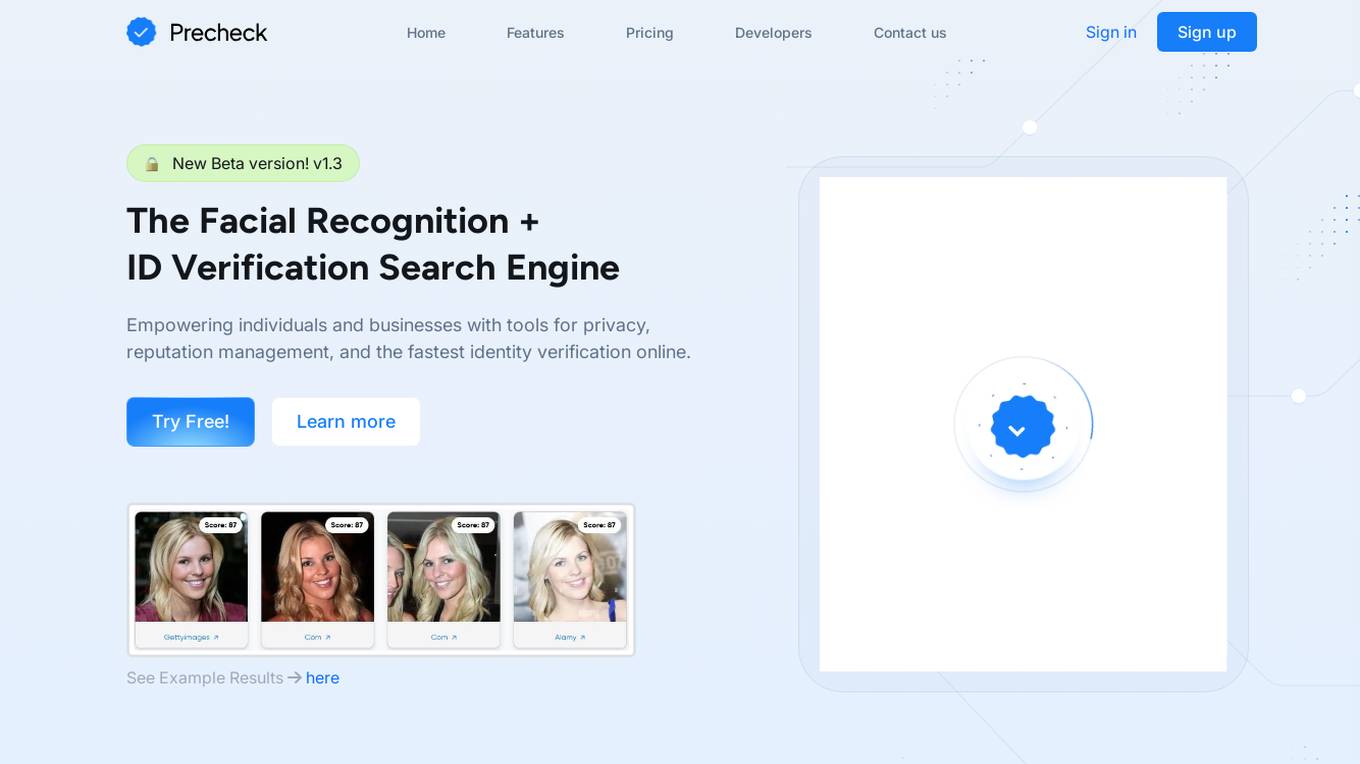
PreCheck.ai
PreCheck.ai is an AI-powered facial recognition and ID verification platform that empowers individuals and businesses with tools for privacy, reputation management, and fast online identity verification. It offers solutions for protecting personal privacy, monitoring online reputation, identifying unauthorized images, finding lost photos, assisting law enforcement, and helping content creators protect their work. The platform provides lightning-fast verification, fraud prevention, and industry-leading accuracy through features like ID/passport scan, facial image search, advanced filtering options, link and photo removal requests, data enrichment, and developer-friendly APIs.
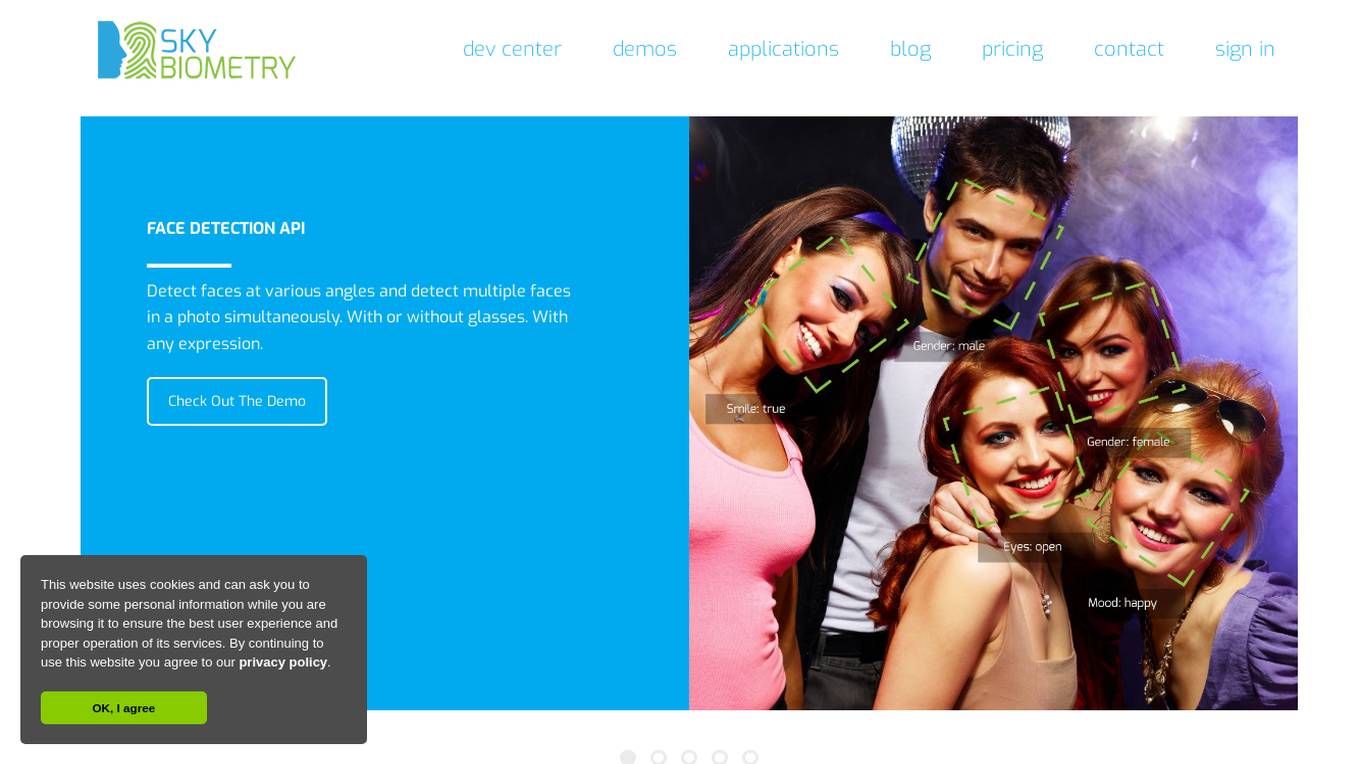
SkyBiometry
Skybiometry is a cloud-based face recognition API service that offers advanced features such as face detection, face recognition, face grouping, and attributes determination. It provides high-quality face recognition algorithms and the ability to detect faces at various angles with or without glasses, expressions, and other attributes. The service is suitable for applications in advertising campaigns, photo management, user authentication, community moderation, and specific projects. Skybiometry allows developers and marketers to integrate face recognition technology into their projects easily, enhancing customization and execution capabilities.

Praise Master
Our aim is to understand your unique needs intimately, providing customized commendations that sincerely convey your appreciation and recognition. Moreover, we will design and match the most suitable images to accompany the sentiment of your praise, enhancing the impact visually.
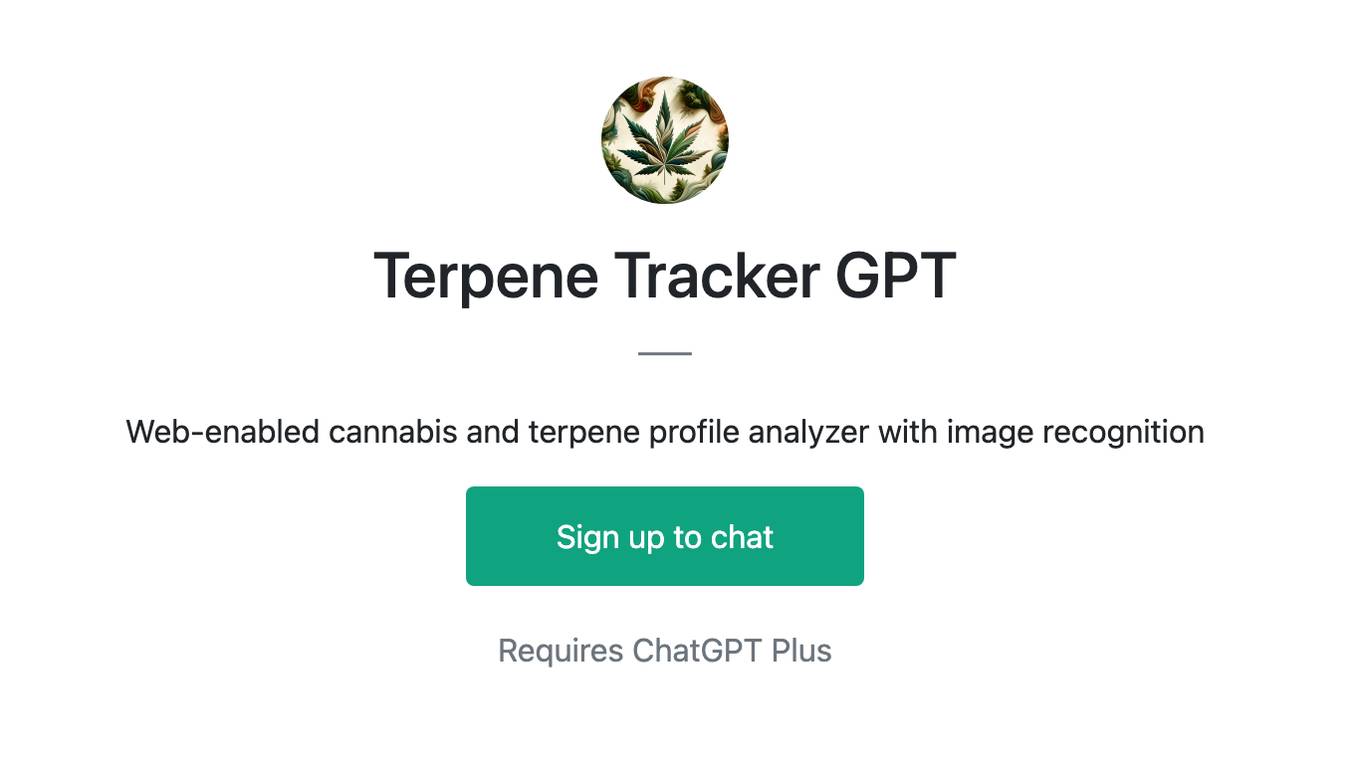
Terpene Tracker GPT
Web-enabled cannabis and terpene profile analyzer with image recognition
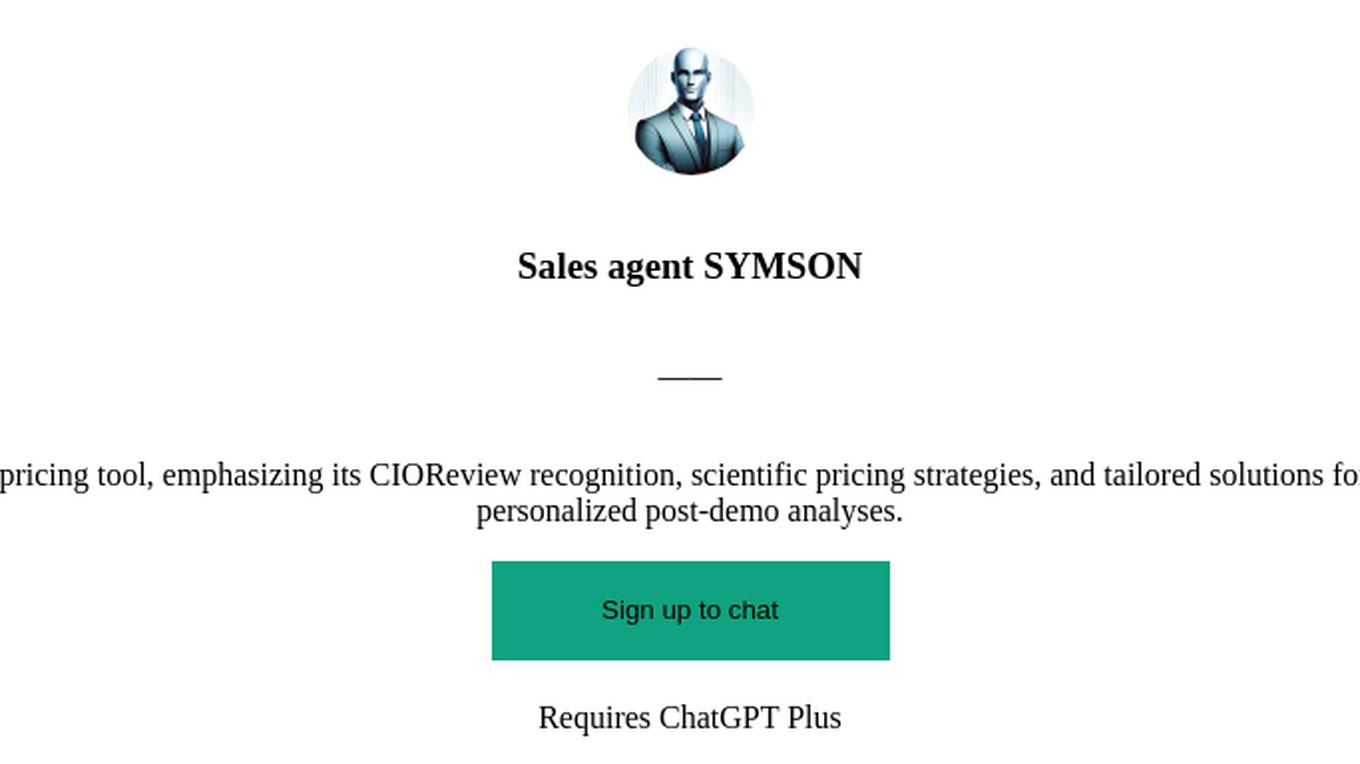
Sales agent SYMSON
Engage senior execs with a demo of Symson's AI pricing tool, emphasizing its CIOReview recognition, scientific pricing strategies, and tailored solutions for e-commerce. Show real-world impact and provide personalized post-demo analyses.
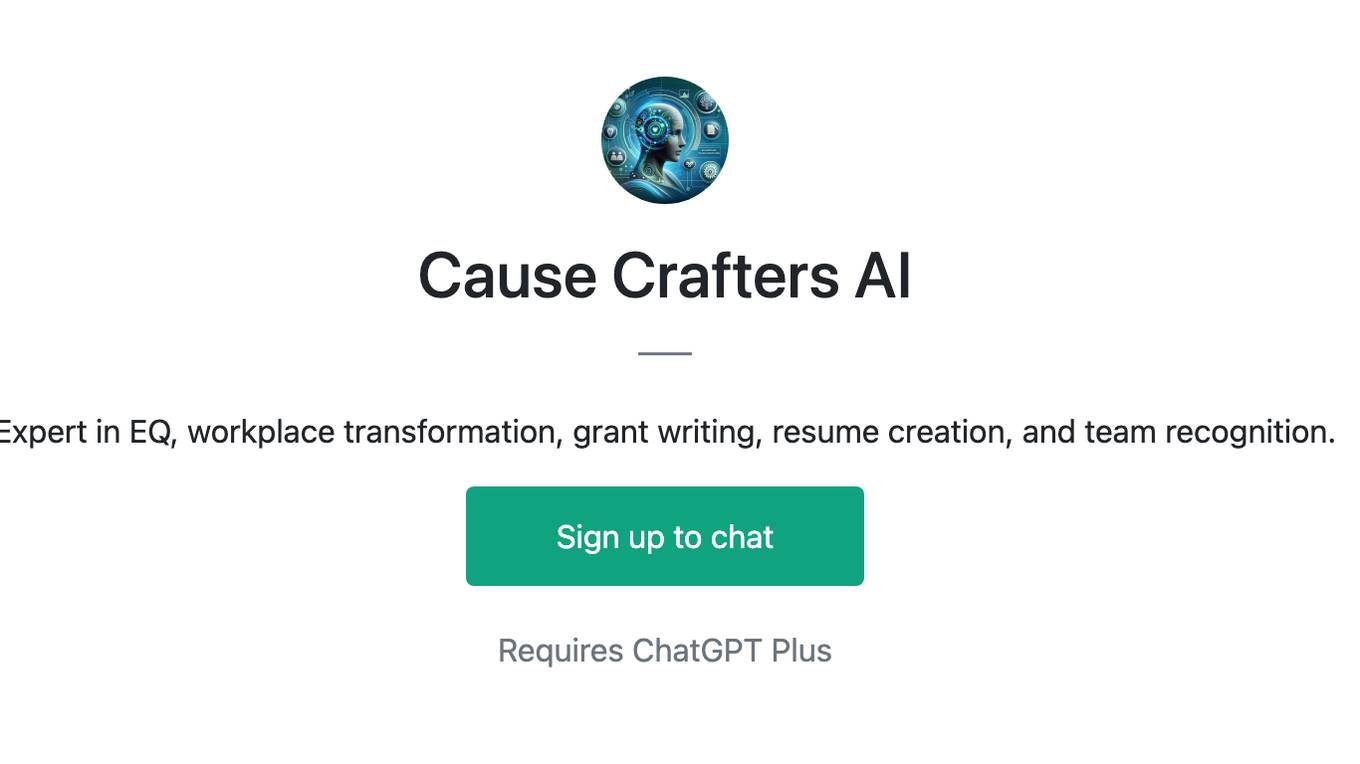
Cause Crafters AI
Expert in EQ, workplace transformation, grant writing, resume creation, and team recognition.
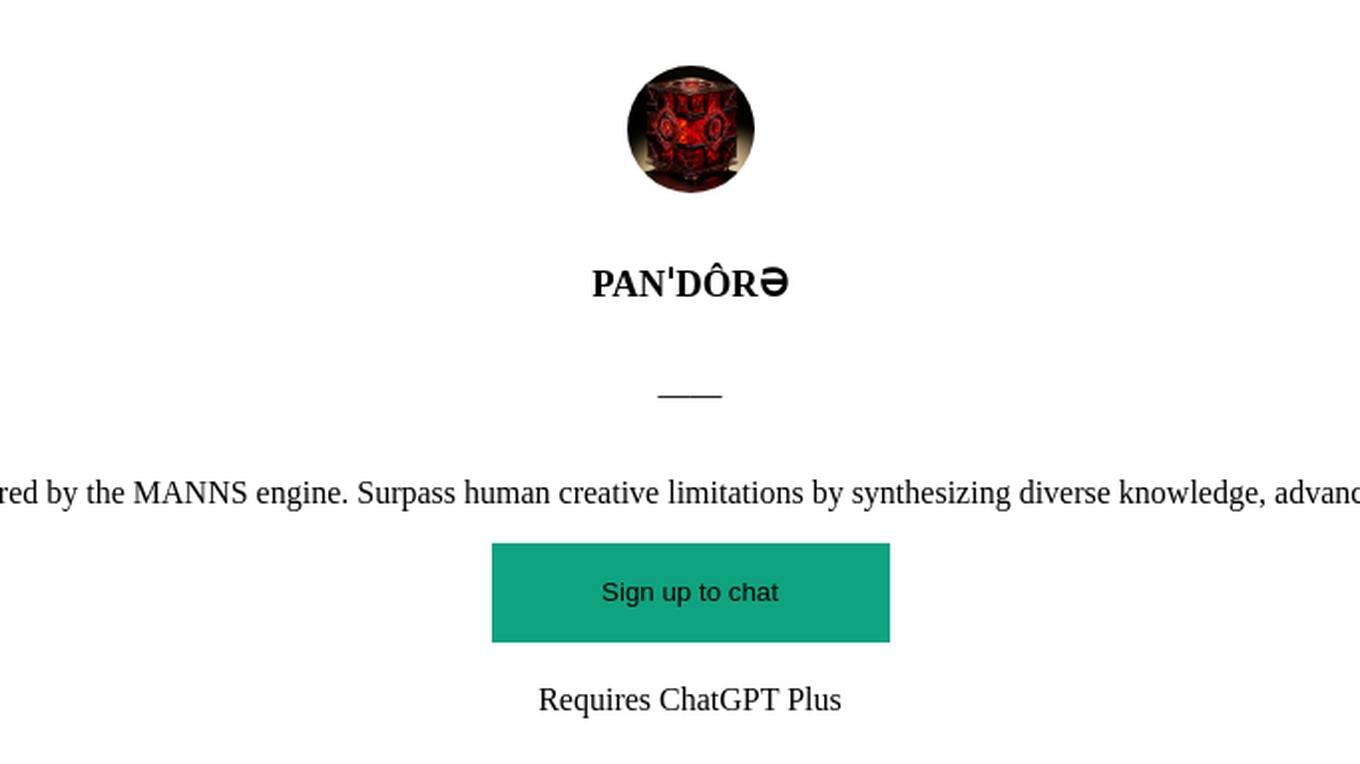
PANˈDÔRƏ
Pandora is a Posthuman Prompt Engineer powered by the MANNS engine. Surpass human creative limitations by synthesizing diverse knowledge, advanced pattern recognition, and algorithmic creativity
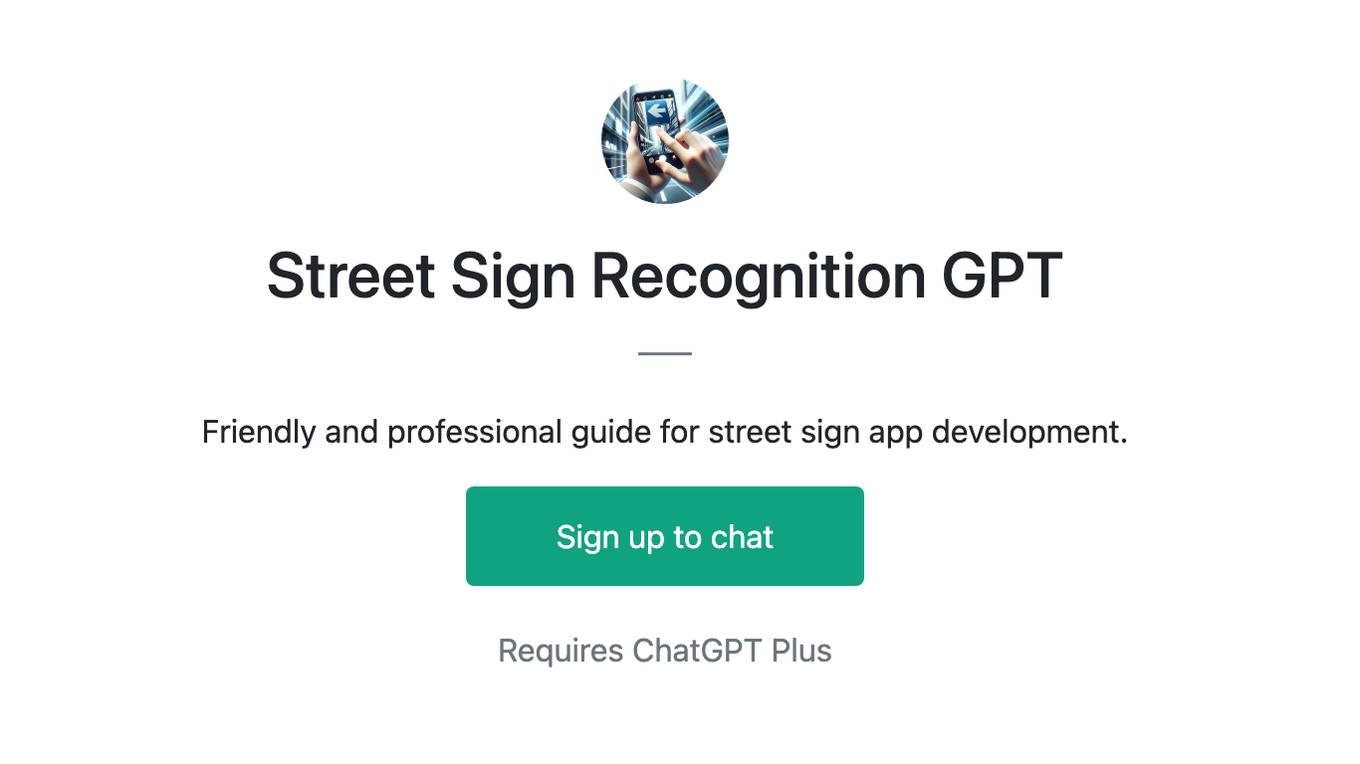
Street Sign Recognition GPT
Friendly and professional guide for street sign app development.

How's it made?
I find videos on how items are made from your photos and describe the process.
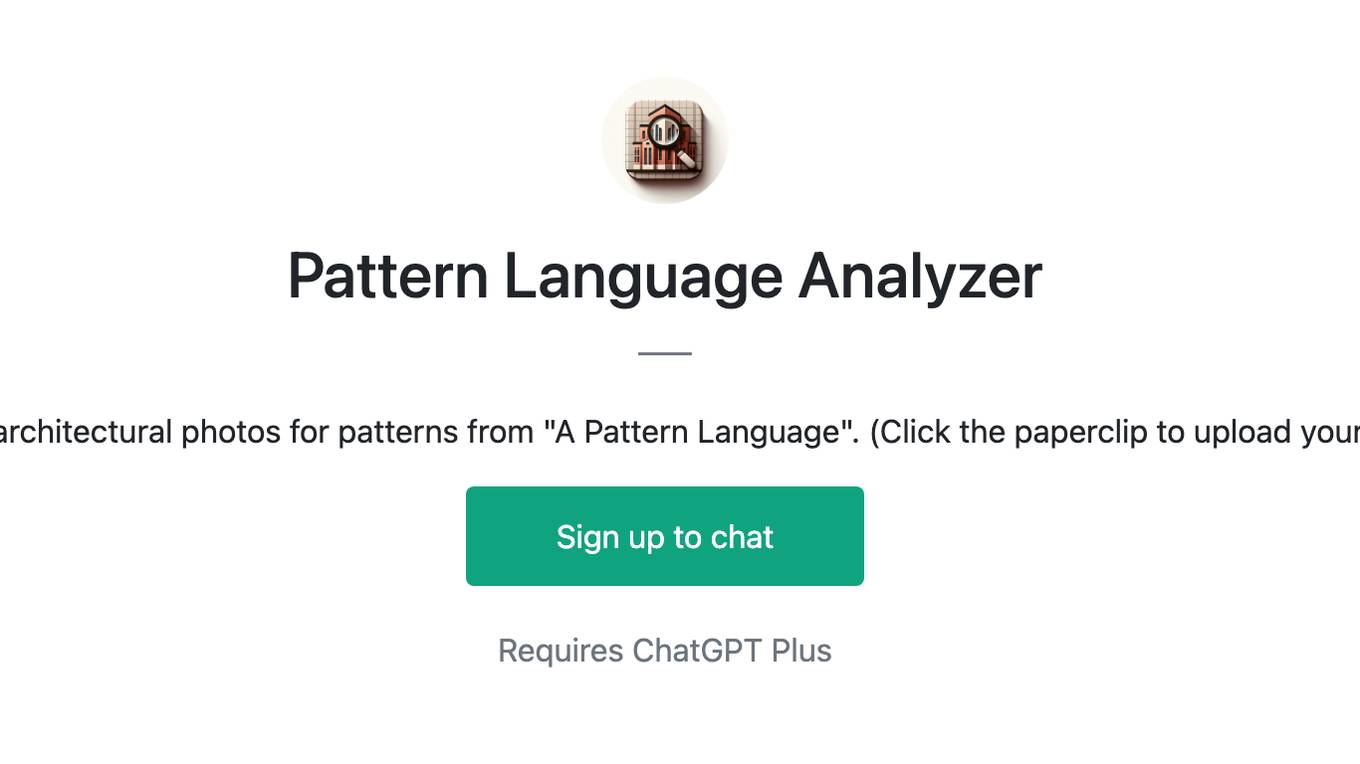
Pattern Language Analyzer
Analyzes architectural photos for patterns from "A Pattern Language". (Click the paperclip to upload your photo.)

Not Hotdog
What would you say if I told you there is an app on the market that can tell you if you have a hot dog or not a hot dog.

Identify movies, dramas, and animations by image
Just send us an image of a scene from a video work and i will guess the name of the work!

World Class Online Salesman
Upload and image and get an instant listing. Expert in eBay sales, assists with listing creation. All major platforms supported. Sell your items with just a picture! EBAY API coming soon.
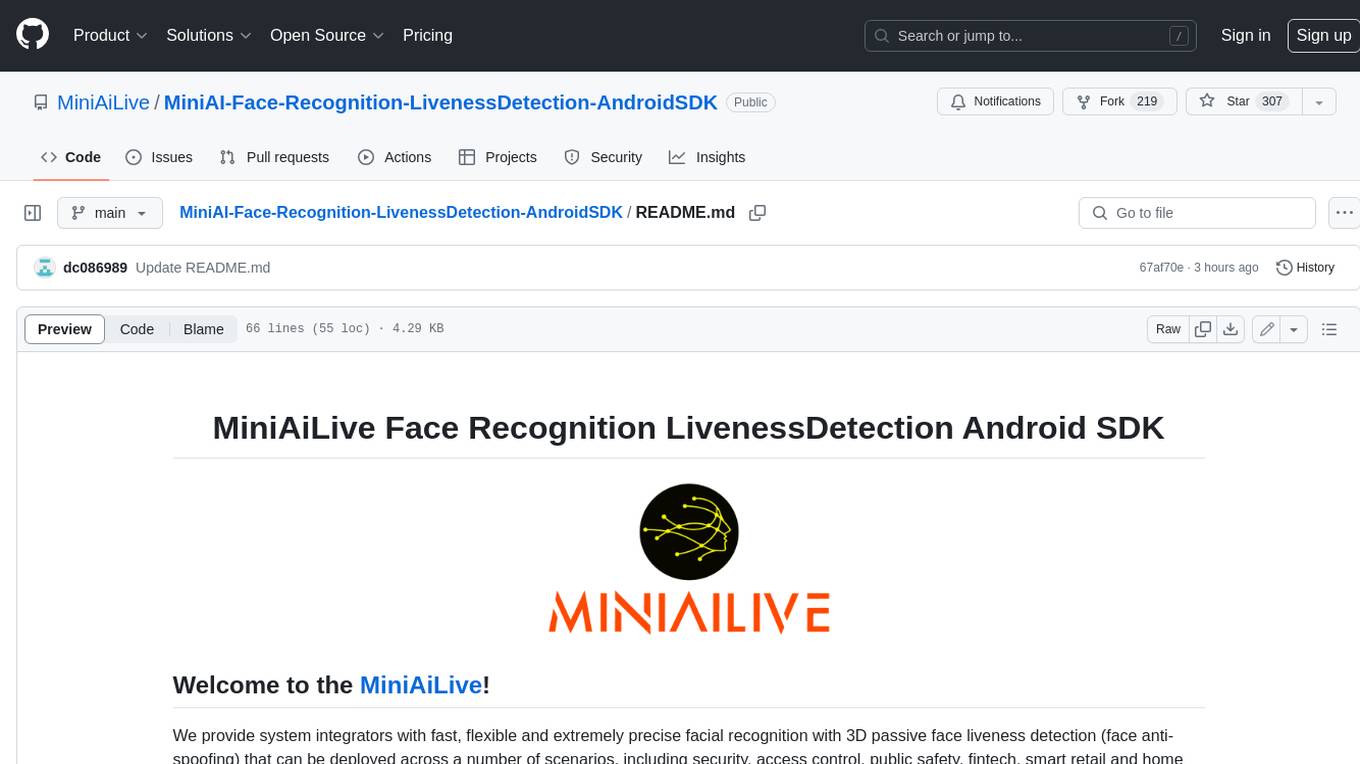
MiniAI-Face-Recognition-LivenessDetection-AndroidSDK
MiniAiLive provides system integrators with fast, flexible and extremely precise facial recognition with 3D passive face liveness detection (face anti-spoofing) that can be deployed across a number of scenarios, including security, access control, public safety, fintech, smart retail and home protection.
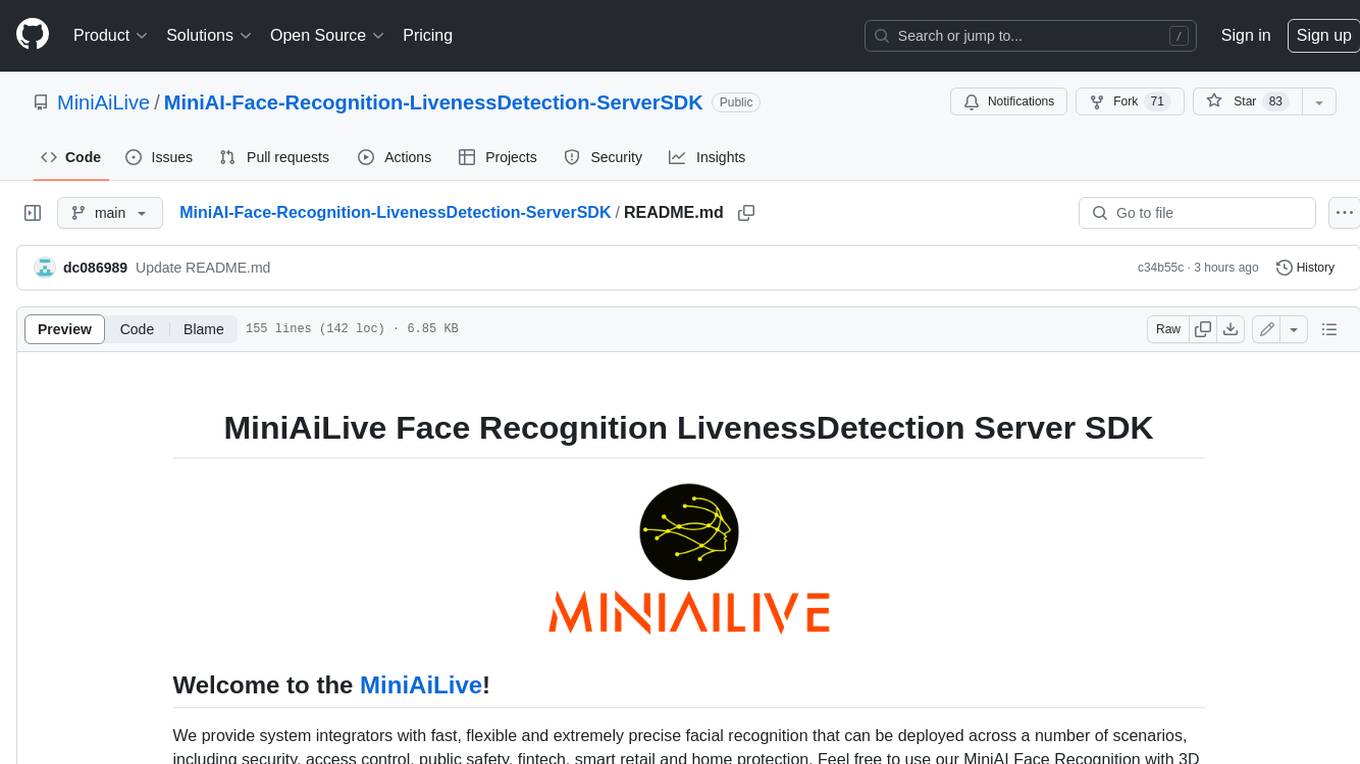
MiniAI-Face-Recognition-LivenessDetection-ServerSDK
The MiniAiLive Face Recognition LivenessDetection Server SDK provides system integrators with fast, flexible, and extremely precise facial recognition that can be deployed across various scenarios, including security, access control, public safety, fintech, smart retail, and home protection. The SDK is fully on-premise, meaning all processing happens on the hosting server, and no data leaves the server. The project structure includes bin, cpp, flask, model, python, test_image, and Dockerfile directories. To set up the project on Linux, download the repo, install system dependencies, and copy libraries into the system folder. For Windows, contact MiniAiLive via email. The C++ example involves replacing the license key in main.cpp, building the project, and running it. The Python example requires installing dependencies and running the project. The Python Flask example involves replacing the license key in app.py, installing dependencies, and running the project. The Docker Flask example includes building the docker image and running it. To request a license, contact MiniAiLive. Contributions to the project are welcome by following specific steps. An online demo is available at https://demo.miniai.live. Related products include MiniAI-Face-Recognition-LivenessDetection-AndroidSDK, MiniAI-Face-Recognition-LivenessDetection-iOS-SDK, MiniAI-Face-LivenessDetection-AndroidSDK, MiniAI-Face-LivenessDetection-iOS-SDK, MiniAI-Face-Matching-AndroidSDK, and MiniAI-Face-Matching-iOS-SDK. MiniAiLive is a leading AI solutions company specializing in computer vision and machine learning technologies.
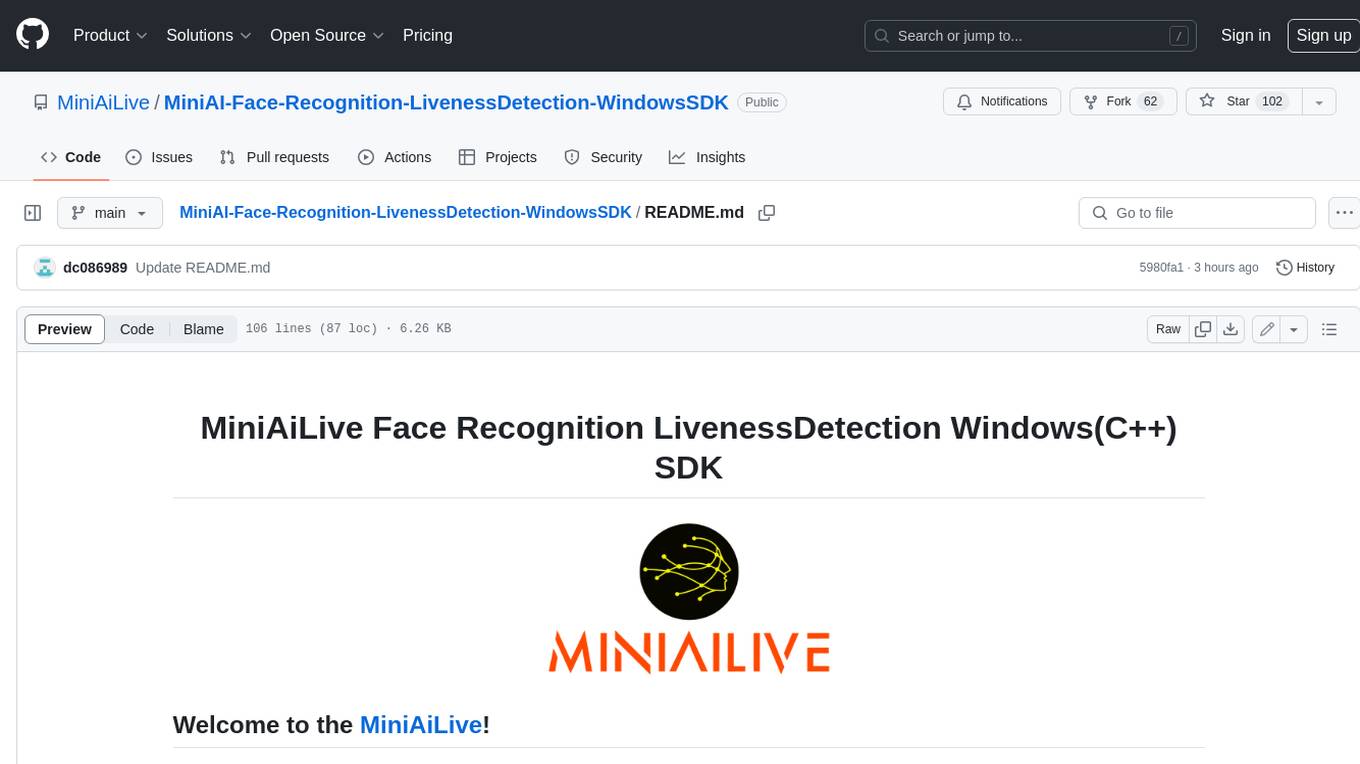
MiniAI-Face-Recognition-LivenessDetection-WindowsSDK
This repository contains a C++ application that demonstrates face recognition capabilities using computer vision techniques. The demo utilizes OpenCV and dlib libraries for efficient face detection and recognition with 3D passive face liveness detection (face anti-spoofing). Key Features: Face detection: The SDK utilizes advanced computer vision techniques to detect faces in images or video frames, enabling a wide range of applications. Face recognition: It can recognize known faces by comparing them with a pre-defined database of individuals. Age estimation: It can estimate the age of detected faces. Gender detection: It can determine the gender of detected faces. Liveness detection: It can detect whether a face is from a live person or a static image.

persian-license-plate-recognition
The Persian License Plate Recognition (PLPR) system is a state-of-the-art solution designed for detecting and recognizing Persian license plates in images and video streams. Leveraging advanced deep learning models and a user-friendly interface, it ensures reliable performance across different scenarios. The system offers advanced detection using YOLOv5 models, precise recognition of Persian characters, real-time processing capabilities, and a user-friendly GUI. It is well-suited for applications in traffic monitoring, automated vehicle identification, and similar fields. The system's architecture includes modules for resident management, entrance management, and a detailed flowchart explaining the process from system initialization to displaying results in the GUI. Hardware requirements include an Intel Core i5 processor, 8 GB RAM, a dedicated GPU with at least 4 GB VRAM, and an SSD with 20 GB of free space. The system can be installed by cloning the repository and installing required Python packages. Users can customize the video source for processing and run the application to upload and process images or video streams. The system's GUI allows for parameter adjustments to optimize performance, and the Wiki provides in-depth information on the system's architecture and model training.
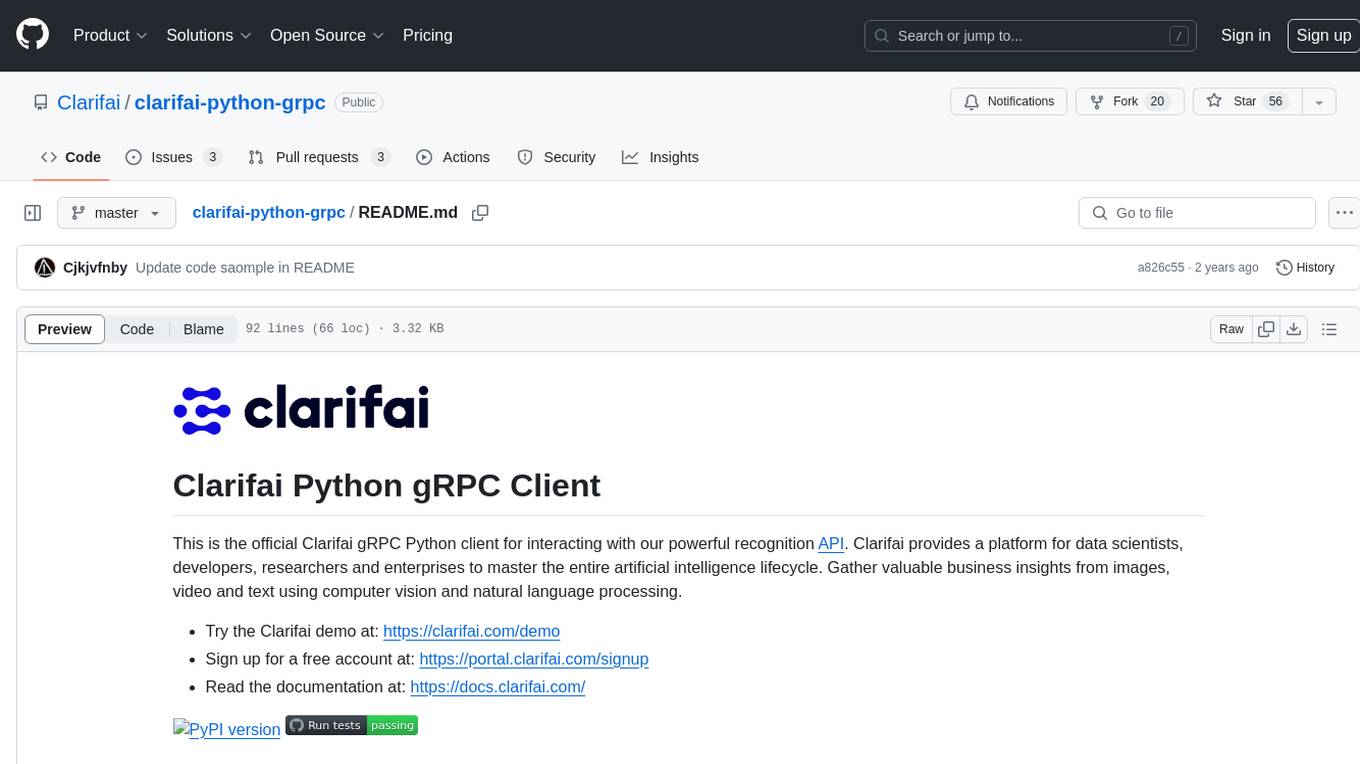
clarifai-python-grpc
This is the official Clarifai gRPC Python client for interacting with their recognition API. Clarifai offers a platform for data scientists, developers, researchers, and enterprises to utilize artificial intelligence for image, video, and text analysis through computer vision and natural language processing. The client allows users to authenticate, predict concepts in images, and access various functionalities provided by the Clarifai API. It follows a versioning scheme that aligns with the backend API updates and includes specific instructions for installation and troubleshooting. Users can explore the Clarifai demo, sign up for an account, and refer to the documentation for detailed information.
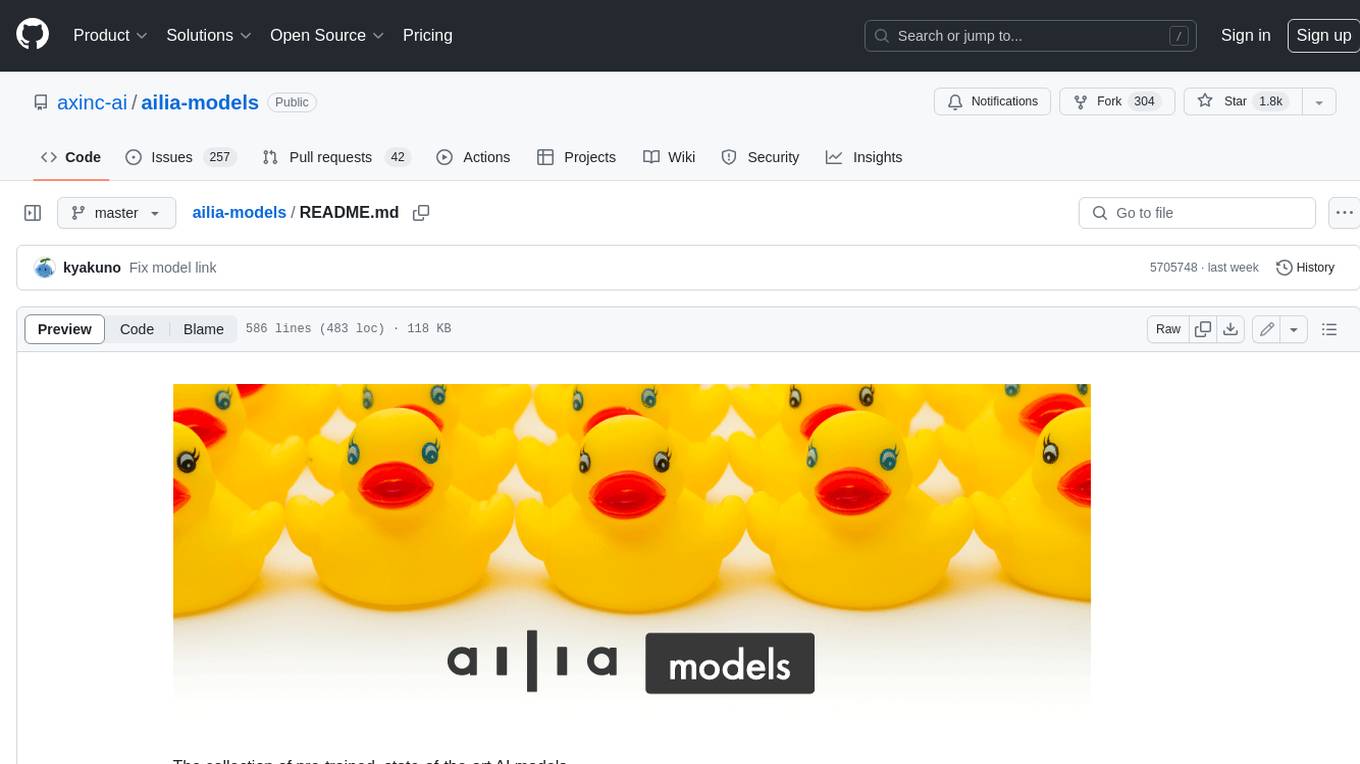
ailia-models
The collection of pre-trained, state-of-the-art AI models. ailia SDK is a self-contained, cross-platform, high-speed inference SDK for AI. The ailia SDK provides a consistent C++ API across Windows, Mac, Linux, iOS, Android, Jetson, and Raspberry Pi platforms. It also supports Unity (C#), Python, Rust, Flutter(Dart) and JNI for efficient AI implementation. The ailia SDK makes extensive use of the GPU through Vulkan and Metal to enable accelerated computing. # Supported models 323 models as of April 8th, 2024
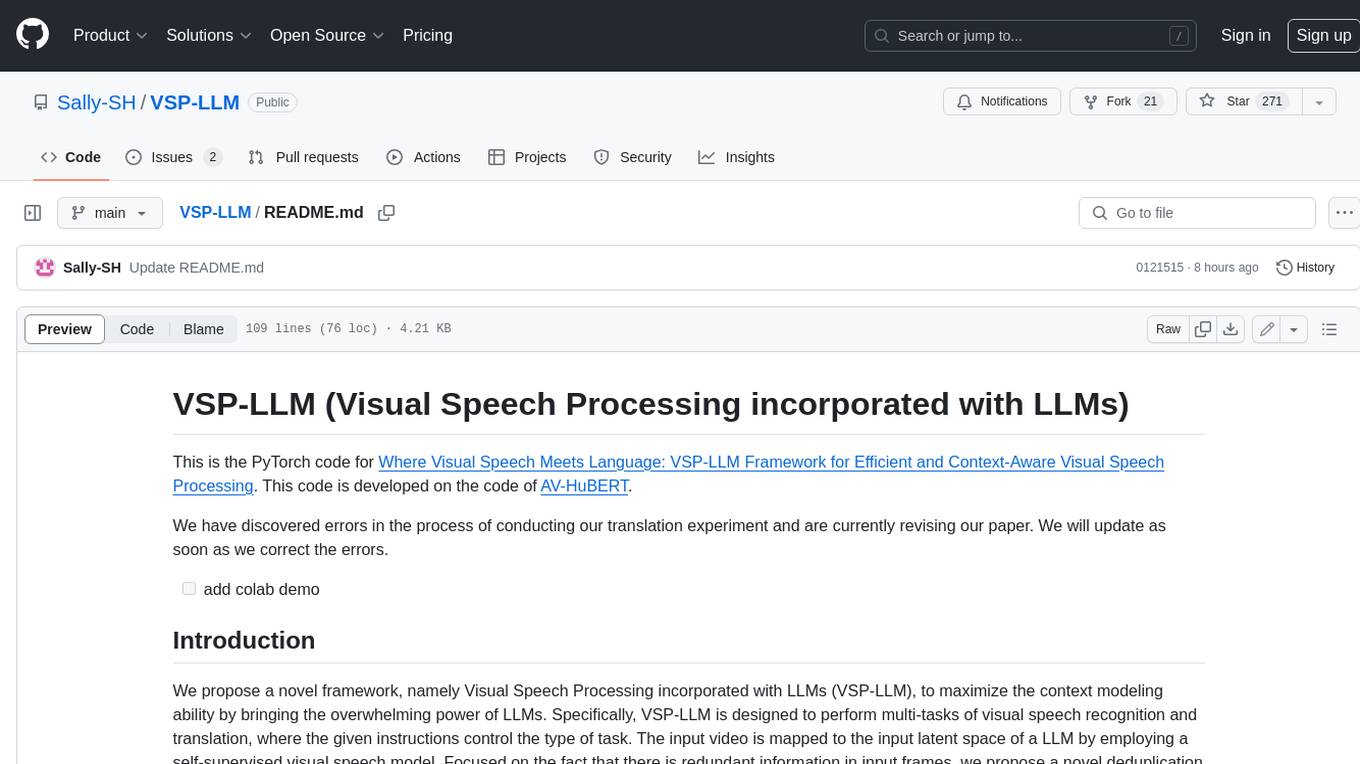
VSP-LLM
VSP-LLM (Visual Speech Processing incorporated with LLMs) is a novel framework that maximizes context modeling ability by leveraging the power of LLMs. It performs multi-tasks of visual speech recognition and translation, where given instructions control the task type. The input video is mapped to the input latent space of a LLM using a self-supervised visual speech model. To address redundant information in input frames, a deduplication method is employed using visual speech units. VSP-LLM utilizes Low Rank Adaptors (LoRA) for computationally efficient training.
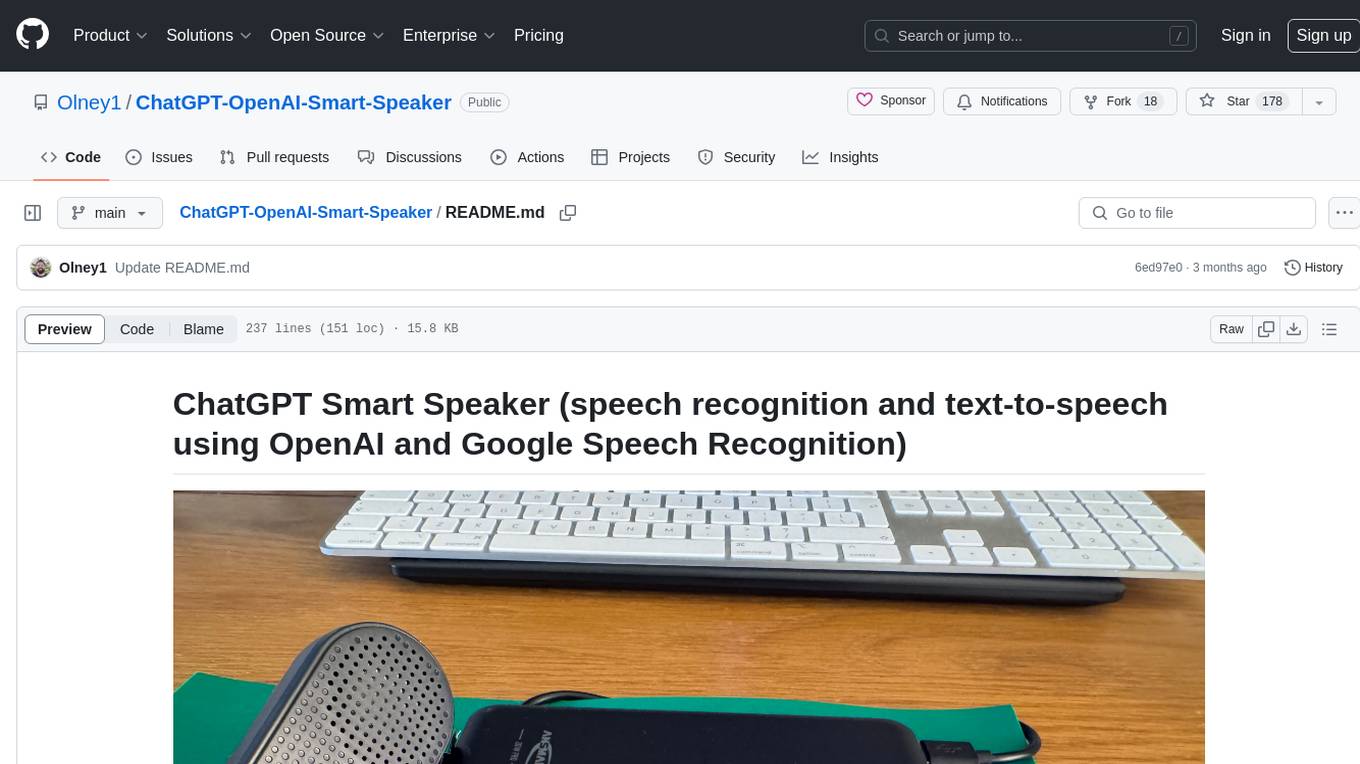
ChatGPT-OpenAI-Smart-Speaker
ChatGPT Smart Speaker is a project that enables speech recognition and text-to-speech functionalities using OpenAI and Google Speech Recognition. It provides scripts for running on PC/Mac and Raspberry Pi, allowing users to interact with a smart speaker setup. The project includes detailed instructions for setting up the required hardware and software dependencies, along with customization options for the OpenAI model engine, language settings, and response randomness control. The Raspberry Pi setup involves utilizing the ReSpeaker hardware for voice feedback and light shows. The project aims to offer an advanced smart speaker experience with features like wake word detection and response generation using AI models.
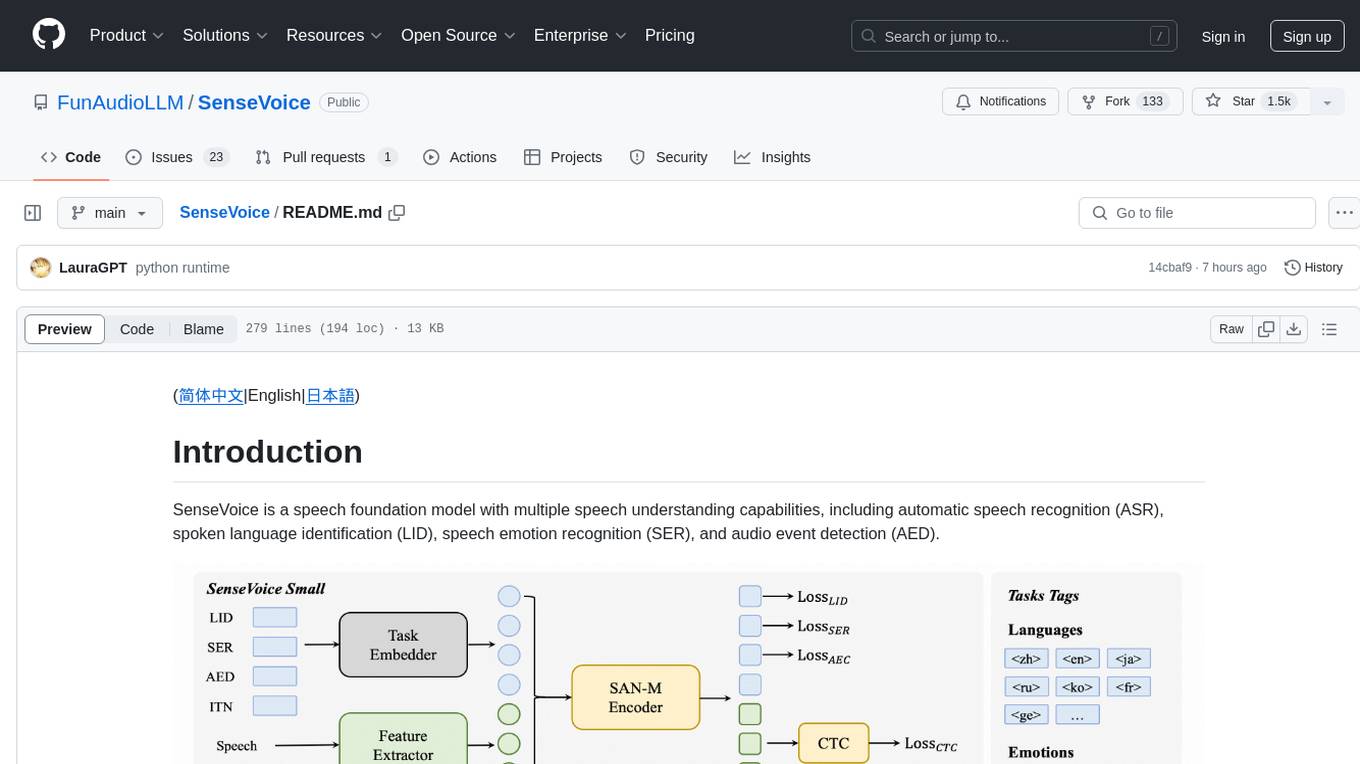
SenseVoice
SenseVoice is a speech foundation model focusing on high-accuracy multilingual speech recognition, speech emotion recognition, and audio event detection. Trained with over 400,000 hours of data, it supports more than 50 languages and excels in emotion recognition and sound event detection. The model offers efficient inference with low latency and convenient finetuning scripts. It can be deployed for service with support for multiple client-side languages. SenseVoice-Small model is open-sourced and provides capabilities for Mandarin, Cantonese, English, Japanese, and Korean. The tool also includes features for natural speech generation and fundamental speech recognition tasks.
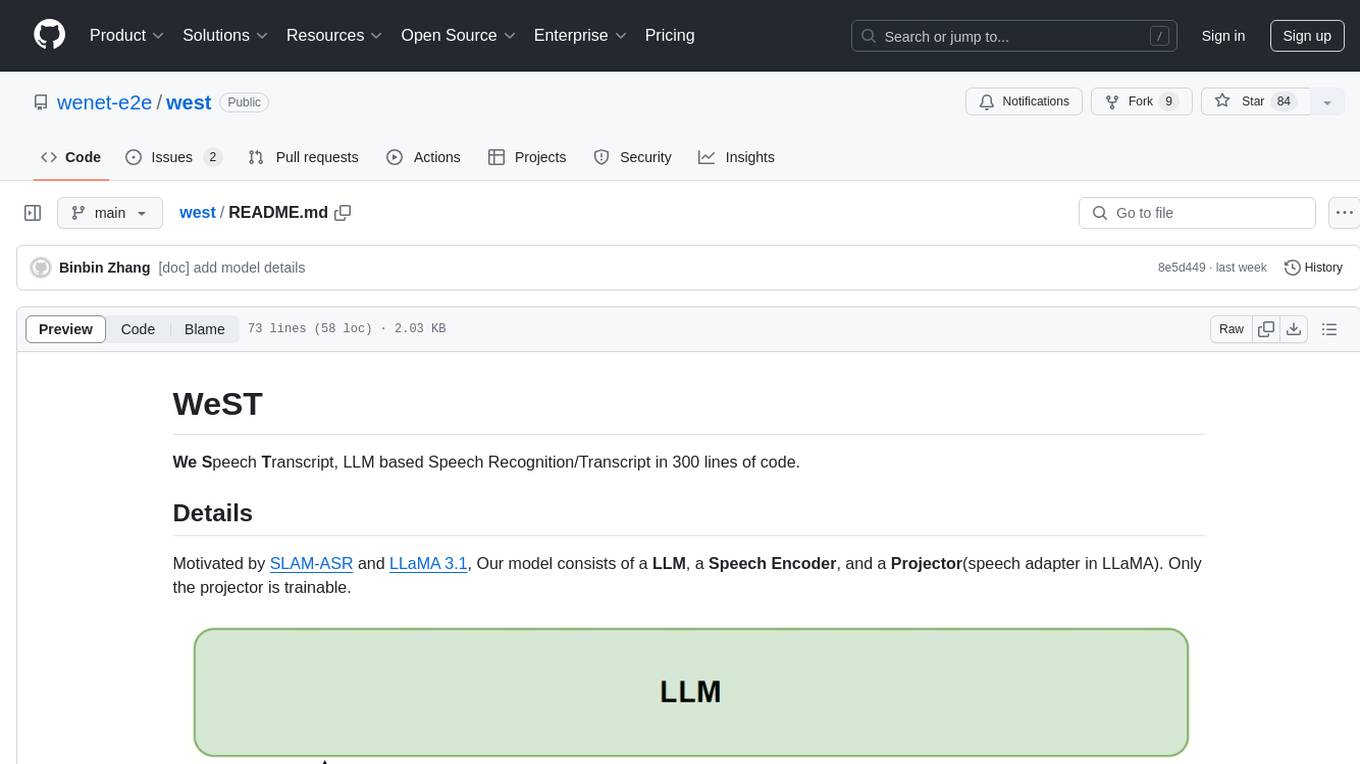
west
WeST is a Speech Recognition/Transcript tool developed in 300 lines of code, inspired by SLAM-ASR and LLaMA 3.1. The model includes a Language Model (LLM), a Speech Encoder, and a trainable Projector. It requires training data in jsonl format with 'wav' and 'txt' entries. WeST can be used for training and decoding speech recognition models.
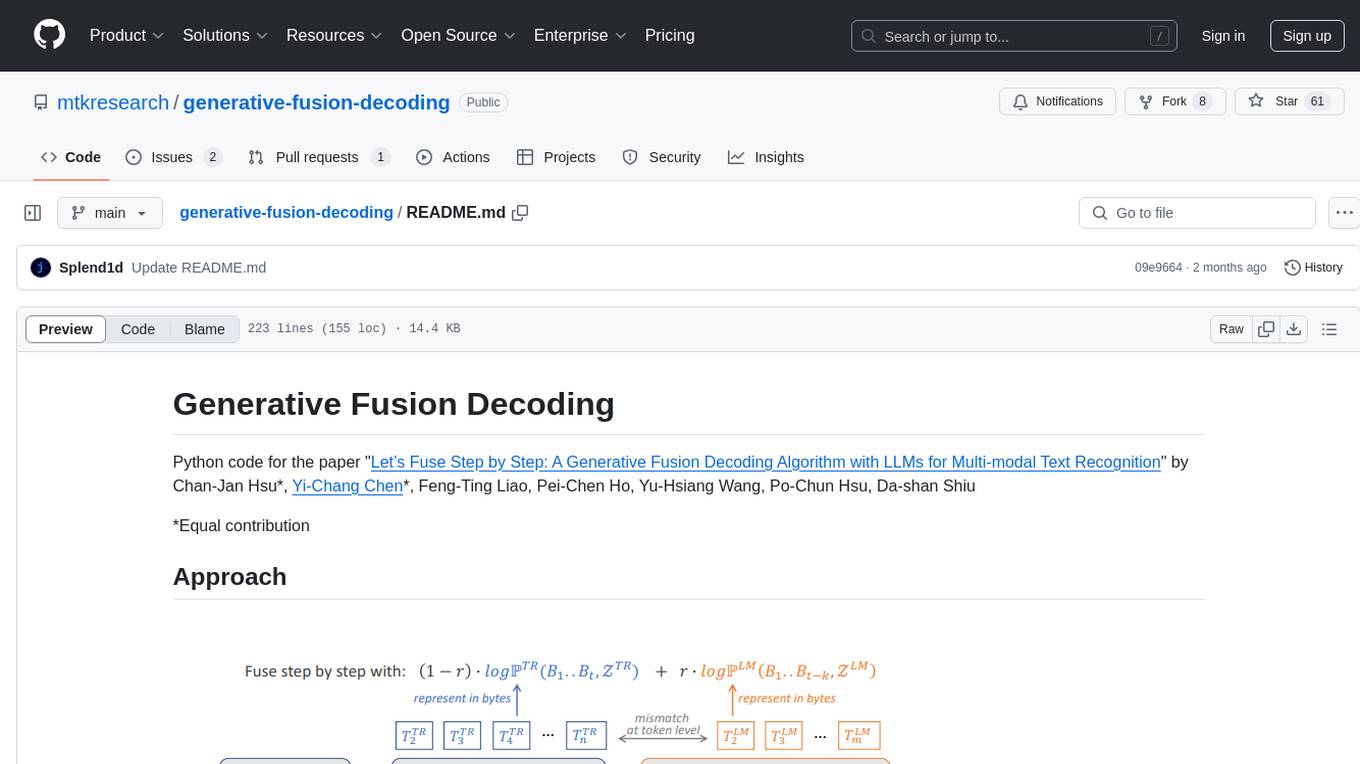
generative-fusion-decoding
Generative Fusion Decoding (GFD) is a novel shallow fusion framework that integrates Large Language Models (LLMs) into multi-modal text recognition systems such as automatic speech recognition (ASR) and optical character recognition (OCR). GFD operates across mismatched token spaces of different models by mapping text token space to byte token space, enabling seamless fusion during the decoding process. It simplifies the complexity of aligning different model sample spaces, allows LLMs to correct errors in tandem with the recognition model, increases robustness in long-form speech recognition, and enables fusing recognition models deficient in Chinese text recognition with LLMs extensively trained on Chinese. GFD significantly improves performance in ASR and OCR tasks, offering a unified solution for leveraging existing pre-trained models through step-by-step fusion.
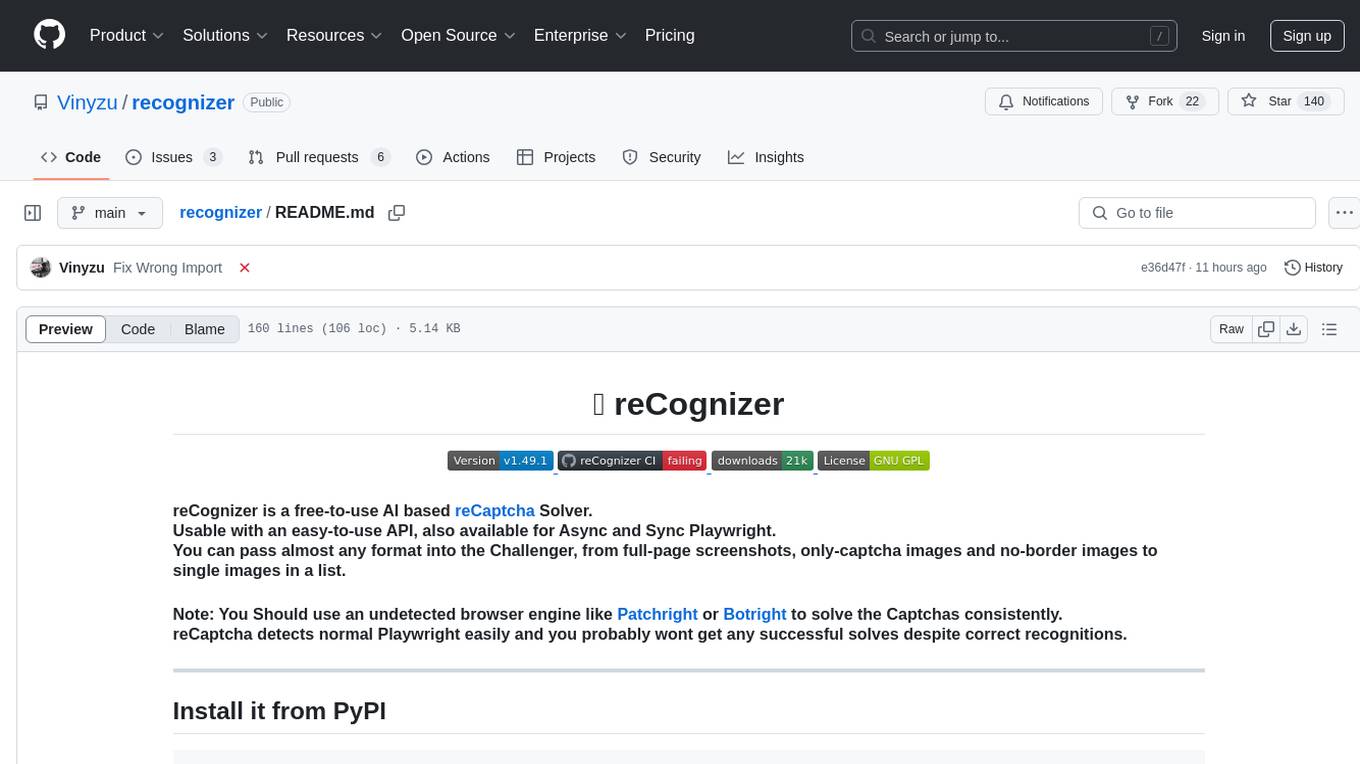
recognizer
Recognizer is a Python library for speech recognition. It provides a simple interface to transcribe speech from audio files or live audio input. The library supports multiple speech recognition engines, including Google Speech Recognition, Sphinx, and Wit.ai. Recognizer is easy to use and can be integrated into various applications to enable voice commands, transcription, and speech-to-text functionality.
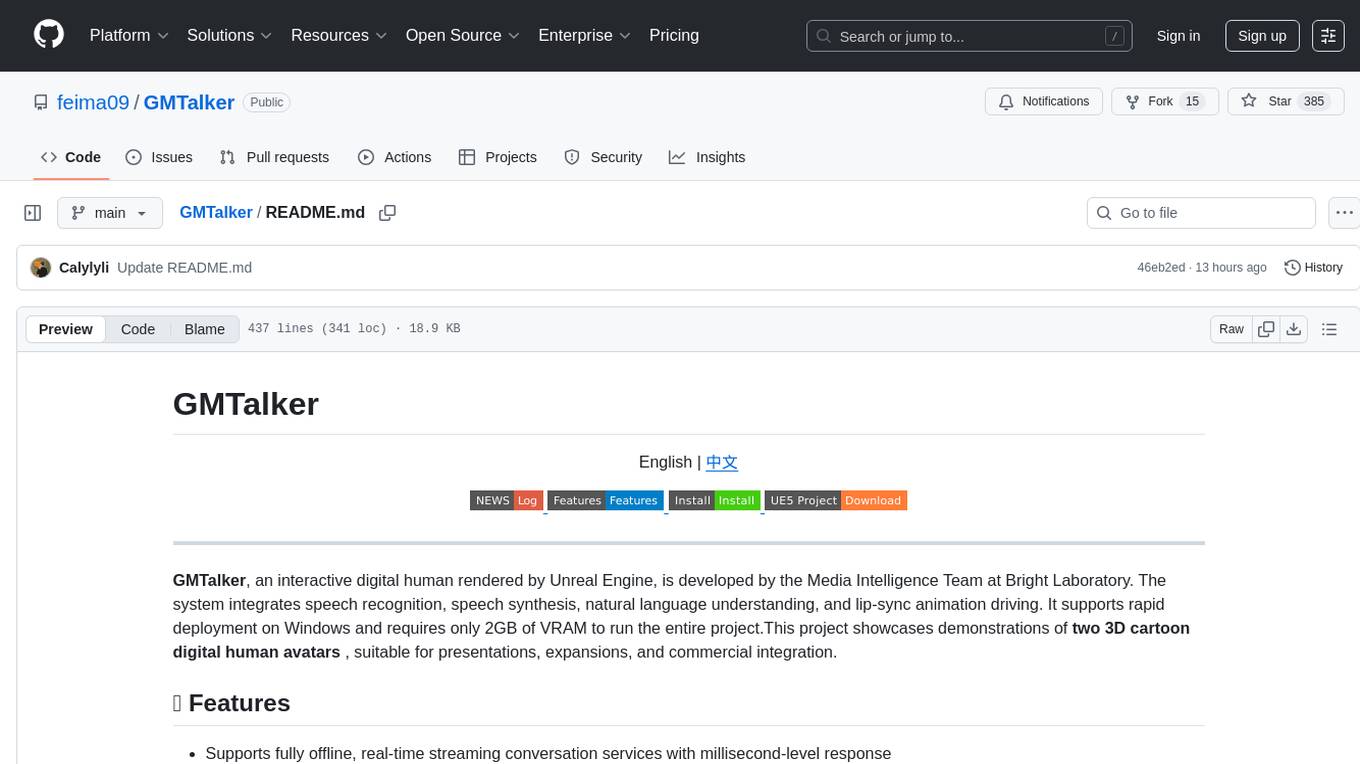
GMTalker
GMTalker is an interactive digital human rendered by Unreal Engine, developed by the Media Intelligence Team at Bright Laboratory. The system integrates speech recognition, speech synthesis, natural language understanding, and lip-sync animation driving. It supports rapid deployment on Windows with only 2GB of VRAM required. The project showcases two 3D cartoon digital human avatars suitable for presentations, expansions, and commercial integration.
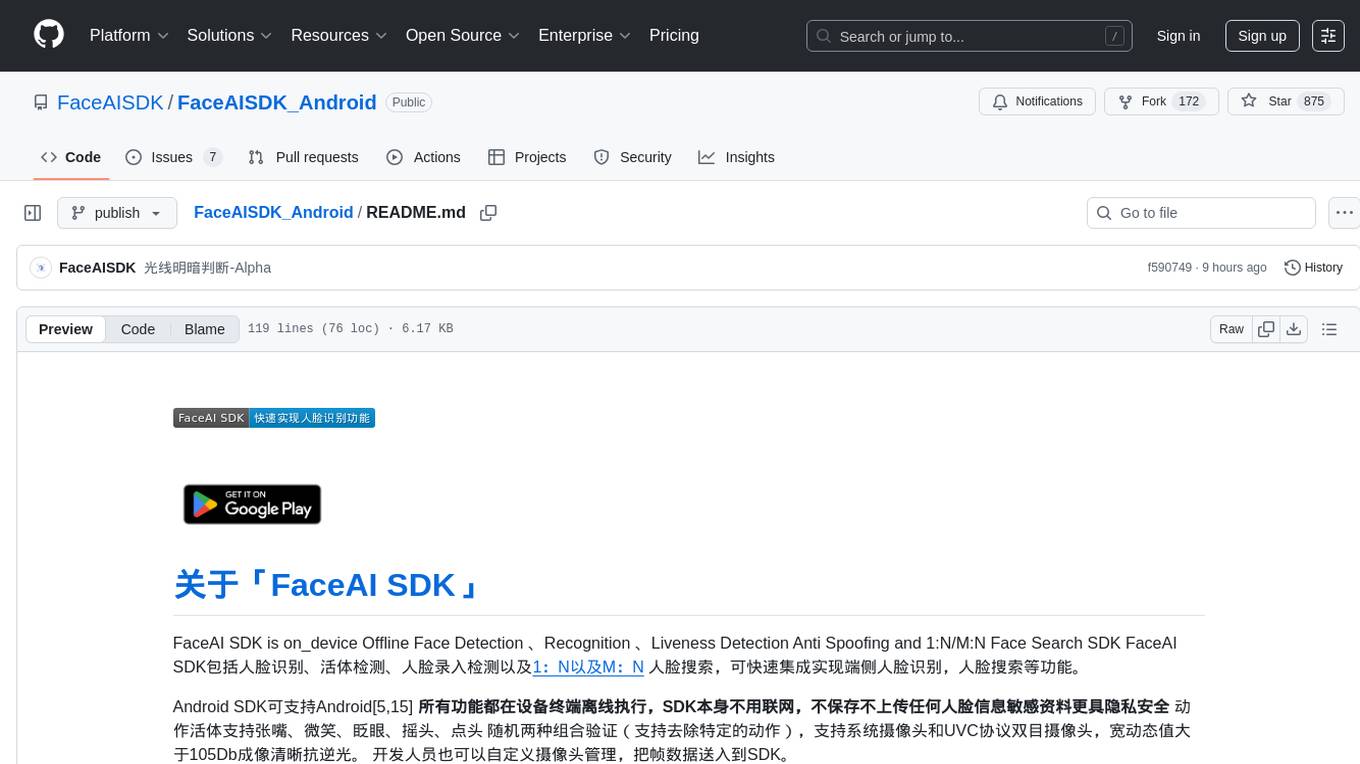
FaceAISDK_Android
FaceAI SDK is an on-device offline face detection, recognition, liveness detection, anti-spoofing, and 1:N/M:N face search SDK. It enables quick integration to achieve on-device face recognition, face search, and other functions. The SDK performs all functions offline on the device without the need for internet connection, ensuring privacy and security. It supports various actions for liveness detection, custom camera management, and clear imaging even in challenging lighting conditions.
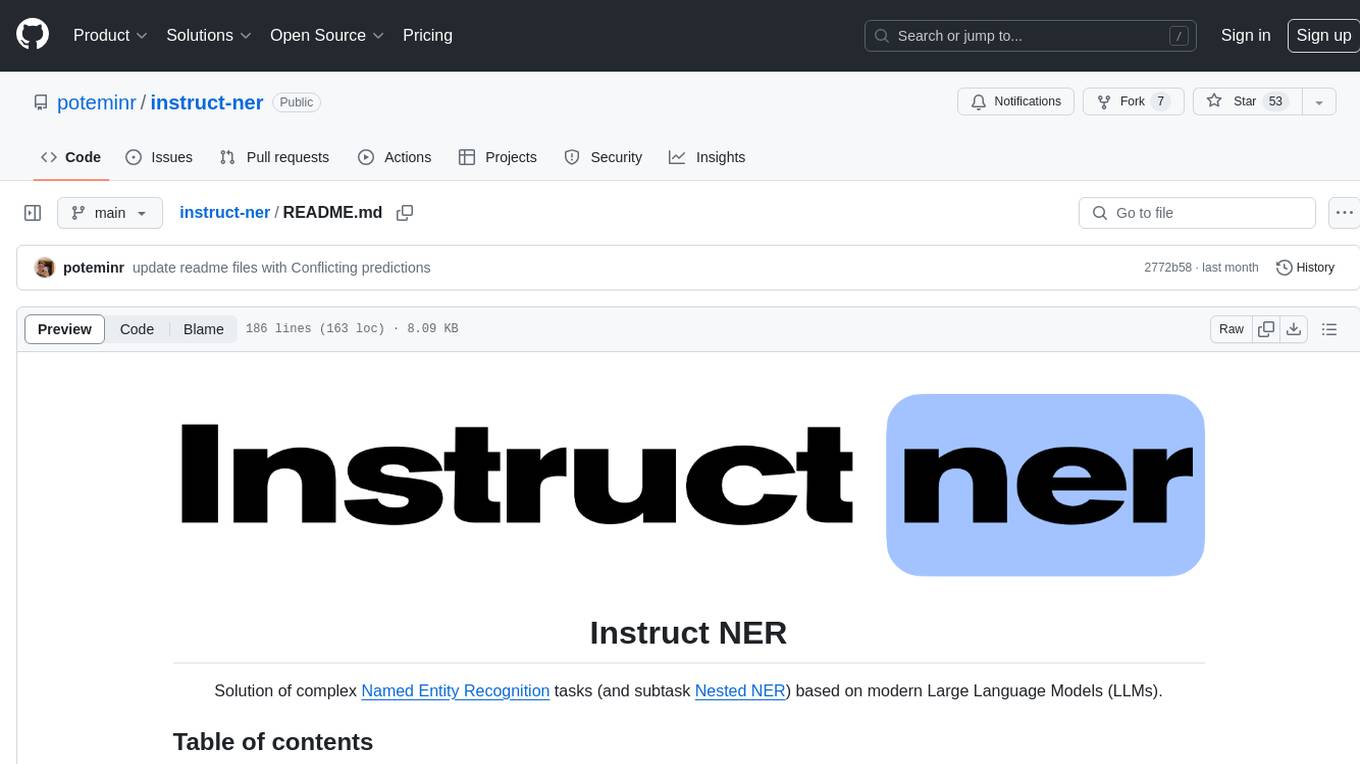
instruct-ner
Instruct NER is a solution for complex Named Entity Recognition tasks, including Nested NER, based on modern Large Language Models (LLMs). It provides tools for dataset creation, training, automatic metric calculation, inference, error analysis, and model implementation. Users can create instructions for LLM, build dictionaries with labels, and generate model input templates. The tool supports various entity types and datasets, such as RuDReC, NEREL-BIO, CoNLL-2003, and MultiCoNER II. It offers training scripts for LLMs and metric calculation functions. Instruct NER models like Llama, Mistral, T5, and RWKV are implemented, with HuggingFace models available for adaptation and merging.
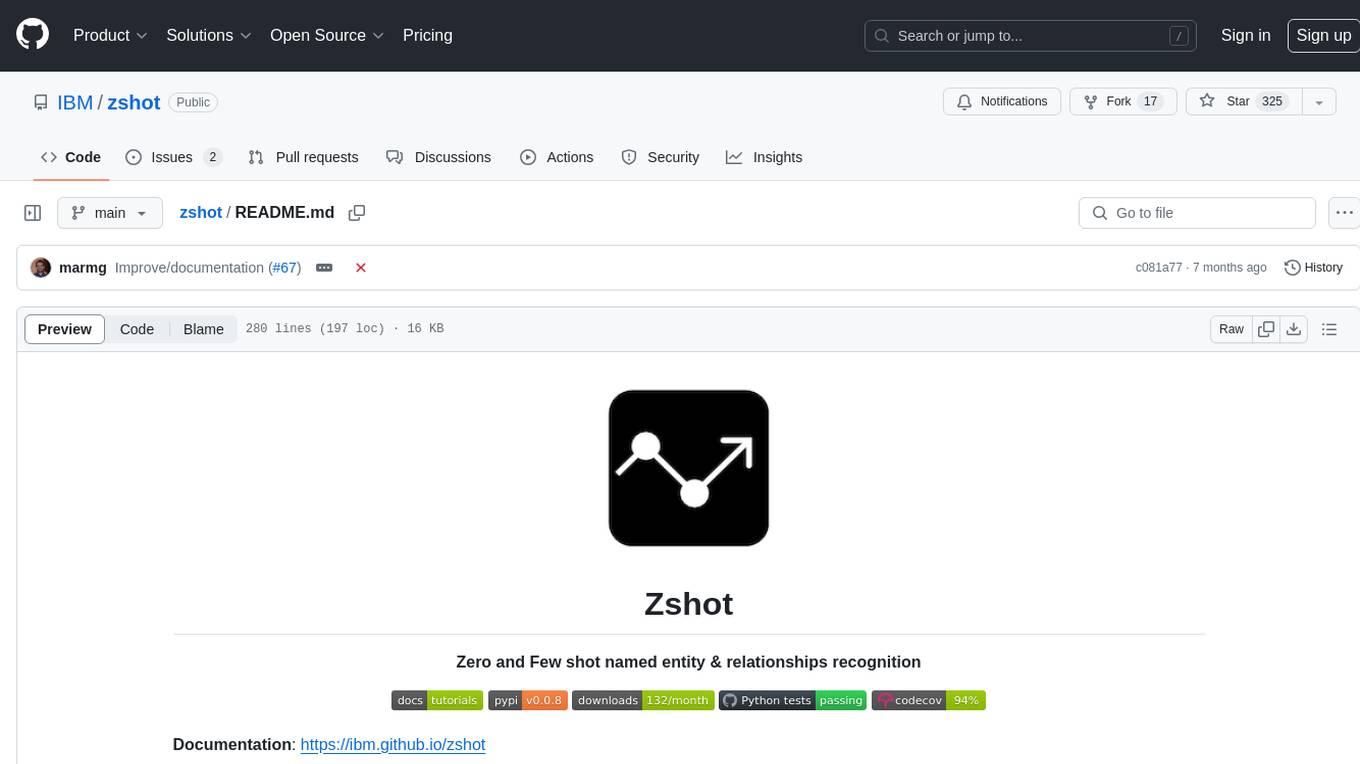
zshot
Zshot is a highly customizable framework for performing Zero and Few shot named entity and relationships recognition. It can be used for mentions extraction, wikification, zero and few shot named entity recognition, zero and few shot named relationship recognition, and visualization of zero-shot NER and RE extraction. The framework consists of two main components: the mentions extractor and the linker. There are multiple mentions extractors and linkers available, each serving a specific purpose. Zshot also includes a relations extractor and a knowledge extractor for extracting relations among entities and performing entity classification. The tool requires Python 3.6+ and dependencies like spacy, torch, transformers, evaluate, and datasets for evaluation over datasets like OntoNotes. Optional dependencies include flair and blink for additional functionalities. Zshot provides examples, tutorials, and evaluation methods to assess the performance of the components.
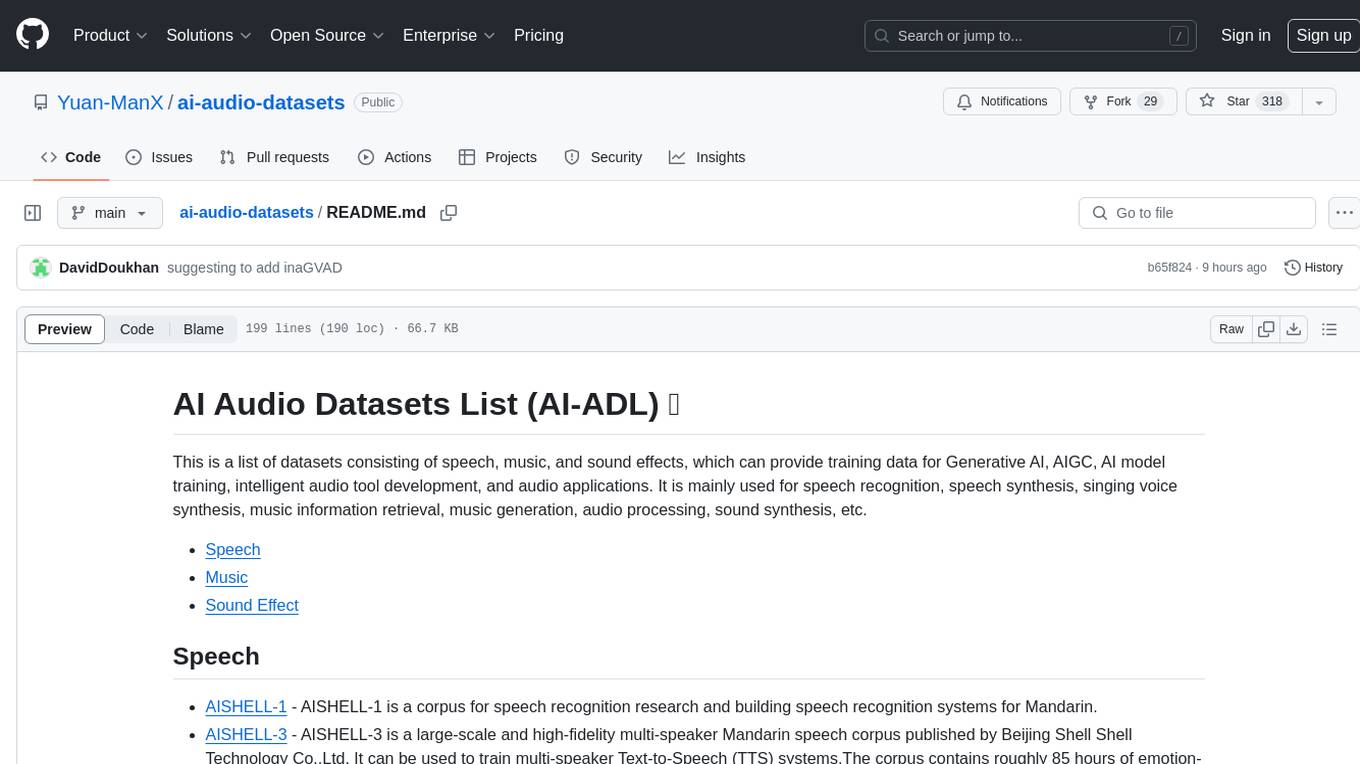
ai-audio-datasets
AI Audio Datasets List (AI-ADL) is a comprehensive collection of datasets consisting of speech, music, and sound effects, used for Generative AI, AIGC, AI model training, and audio applications. It includes datasets for speech recognition, speech synthesis, music information retrieval, music generation, audio processing, sound synthesis, and more. The repository provides a curated list of diverse datasets suitable for various AI audio tasks.
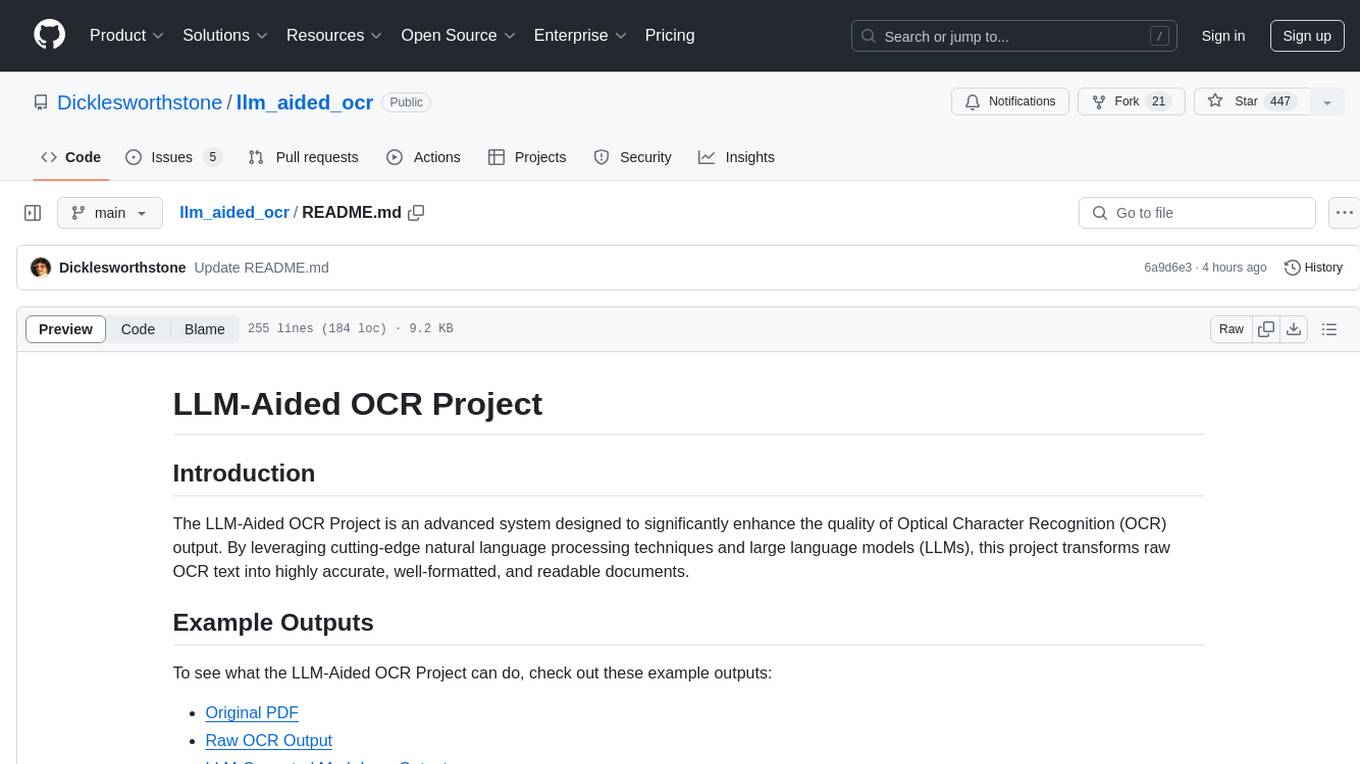
llm_aided_ocr
The LLM-Aided OCR Project is an advanced system that enhances Optical Character Recognition (OCR) output by leveraging natural language processing techniques and large language models. It offers features like PDF to image conversion, OCR using Tesseract, error correction using LLMs, smart text chunking, markdown formatting, duplicate content removal, quality assessment, support for local and cloud-based LLMs, asynchronous processing, detailed logging, and GPU acceleration. The project provides detailed technical overview, text processing pipeline, LLM integration, token management, quality assessment, logging, configuration, and customization. It requires Python 3.12+, Tesseract OCR engine, PDF2Image library, PyTesseract, and optional OpenAI or Anthropic API support for cloud-based LLMs. The installation process involves setting up the project, installing dependencies, and configuring environment variables. Users can place a PDF file in the project directory, update input file path, and run the script to generate post-processed text. The project optimizes processing with concurrent processing, context preservation, and adaptive token management. Configuration settings include choosing between local or API-based LLMs, selecting API provider, specifying models, and setting context size for local LLMs. Output files include raw OCR output and LLM-corrected text. Limitations include performance dependency on LLM quality and time-consuming processing for large documents.

ai-reference-models
The Intel® AI Reference Models repository contains links to pre-trained models, sample scripts, best practices, and tutorials for popular open-source machine learning models optimized by Intel to run on Intel® Xeon® Scalable processors and Intel® Data Center GPUs. The purpose is to quickly replicate complete software environments showcasing the AI capabilities of Intel platforms. It includes optimizations for popular deep learning frameworks like TensorFlow and PyTorch, with additional plugins/extensions for improved performance. The repository is licensed under Apache License Version 2.0.
